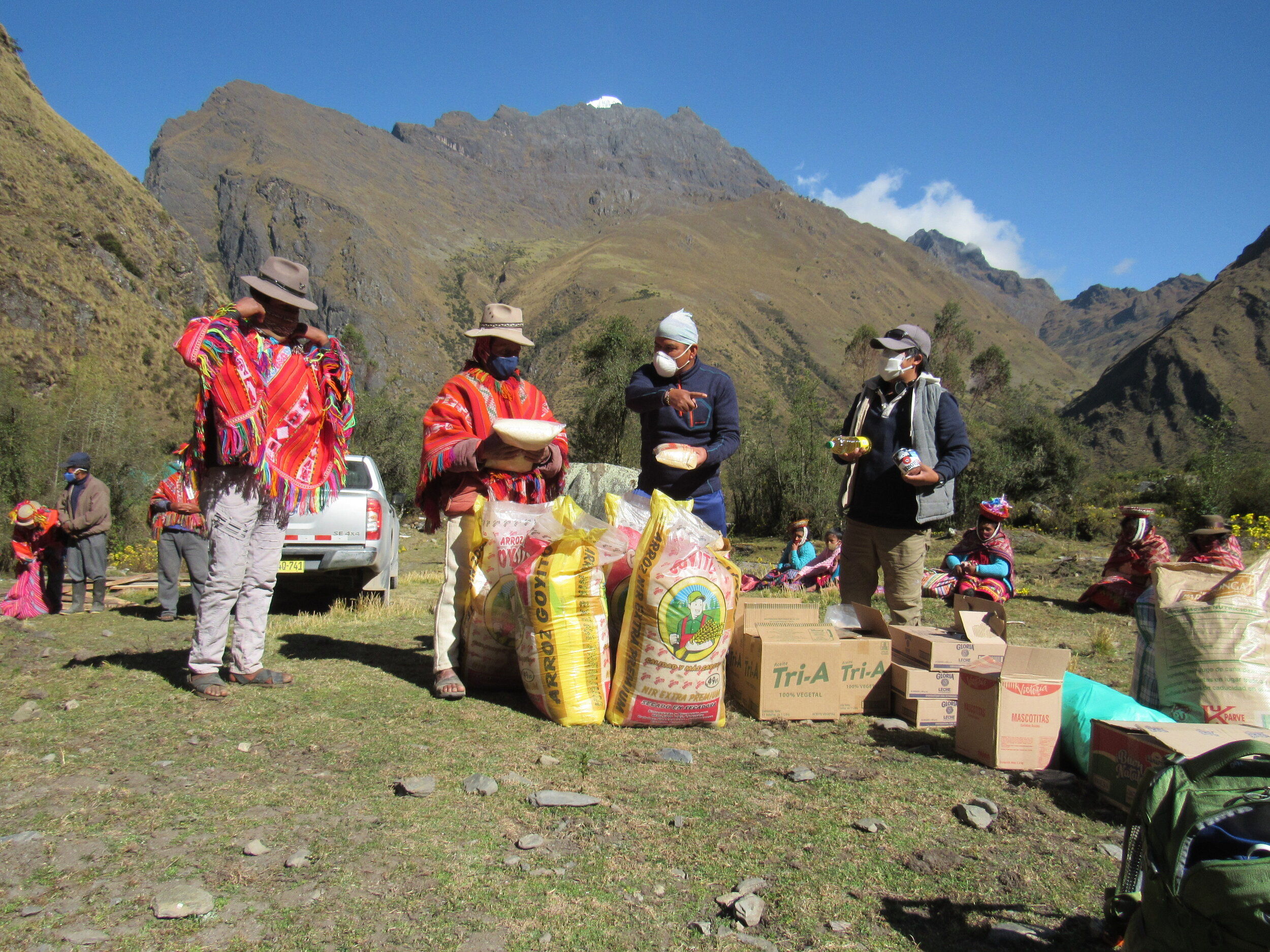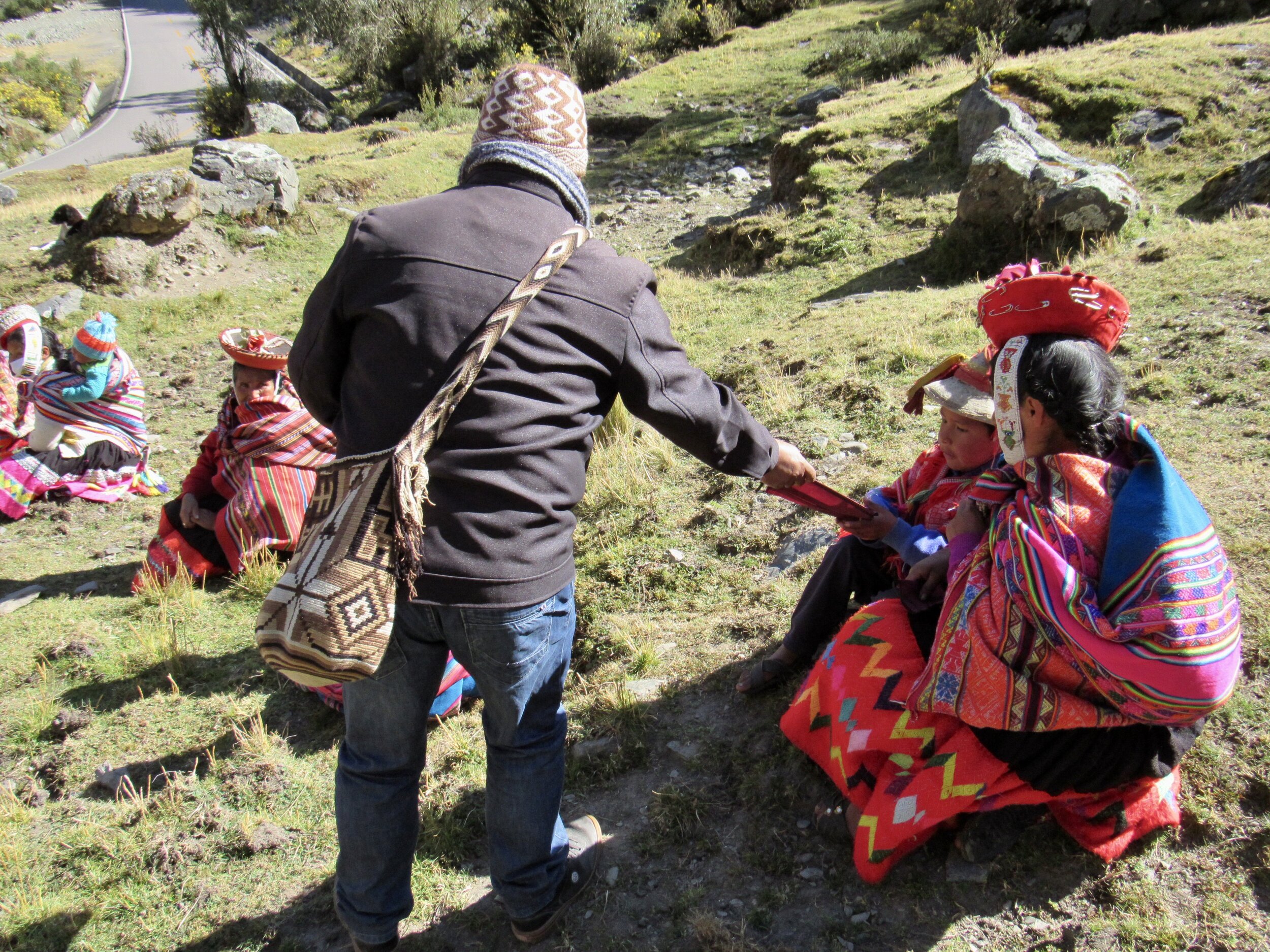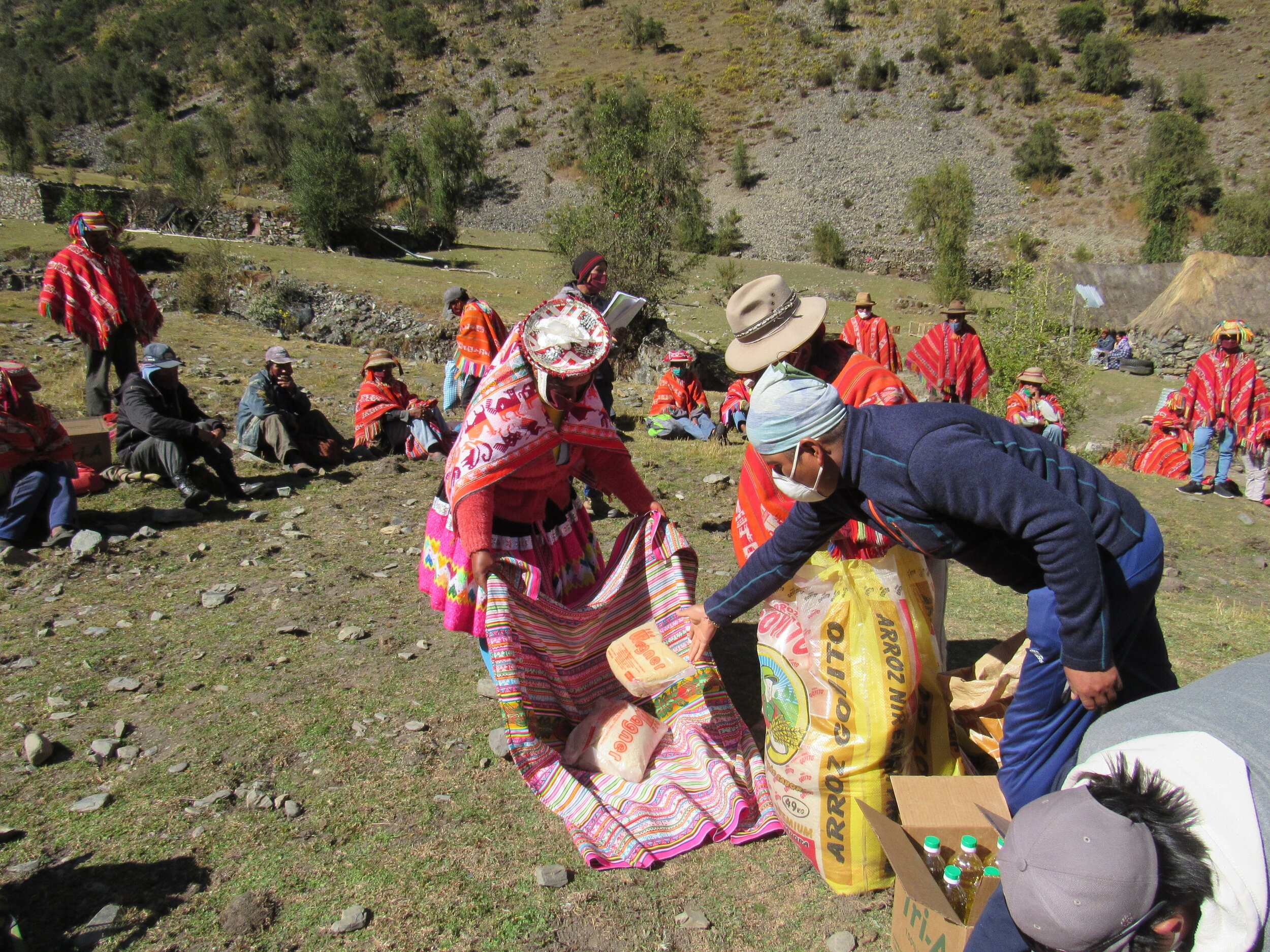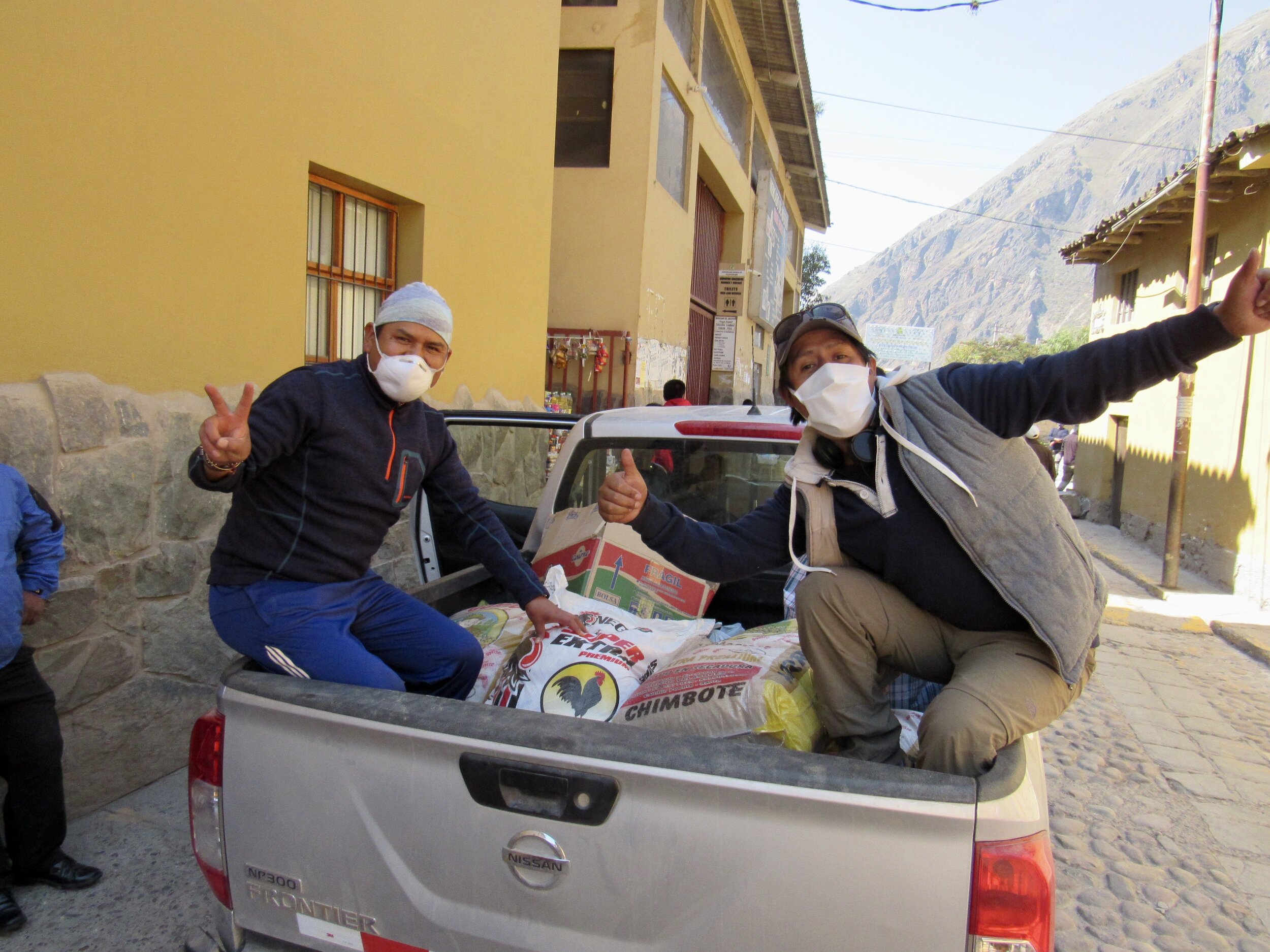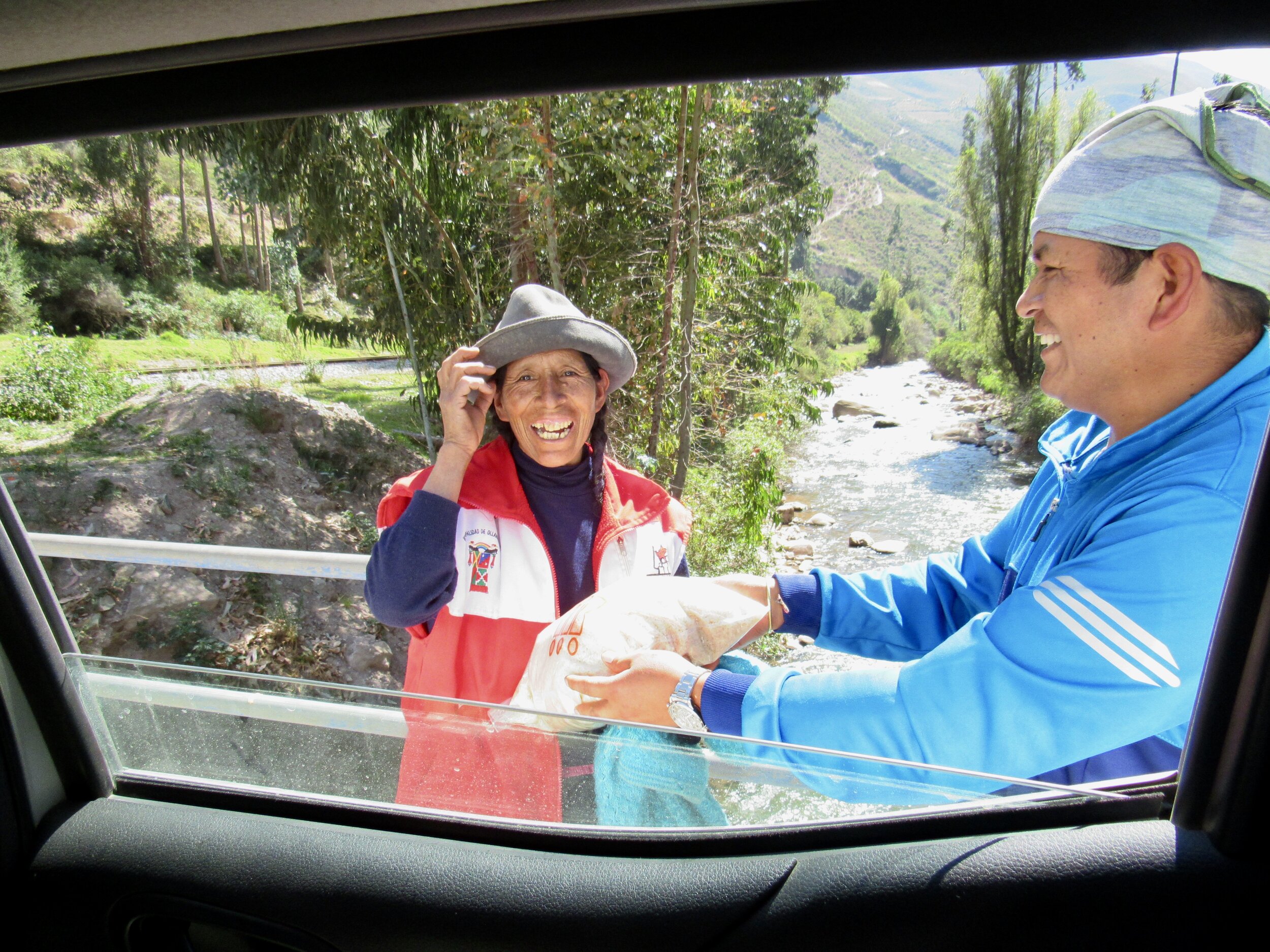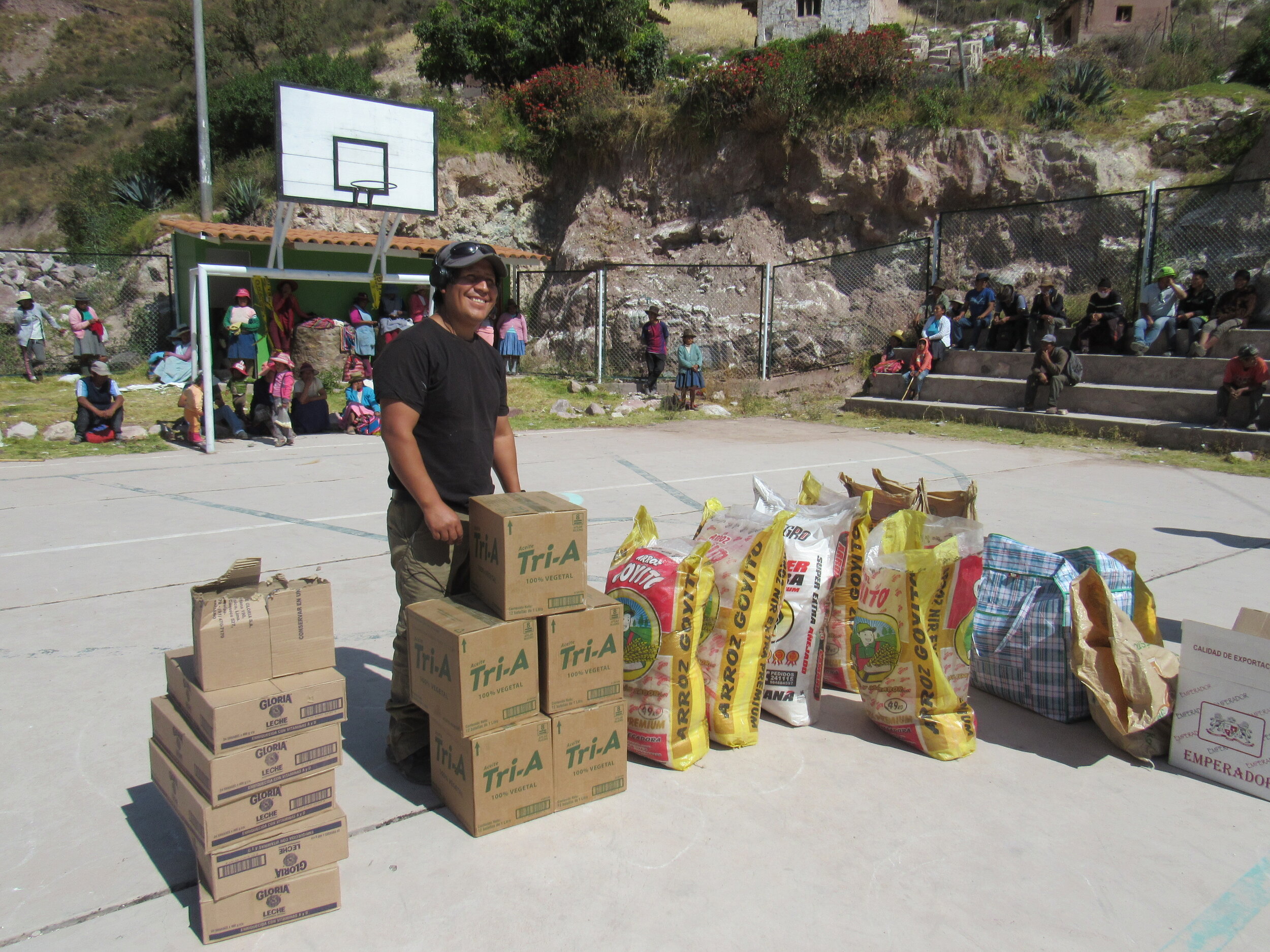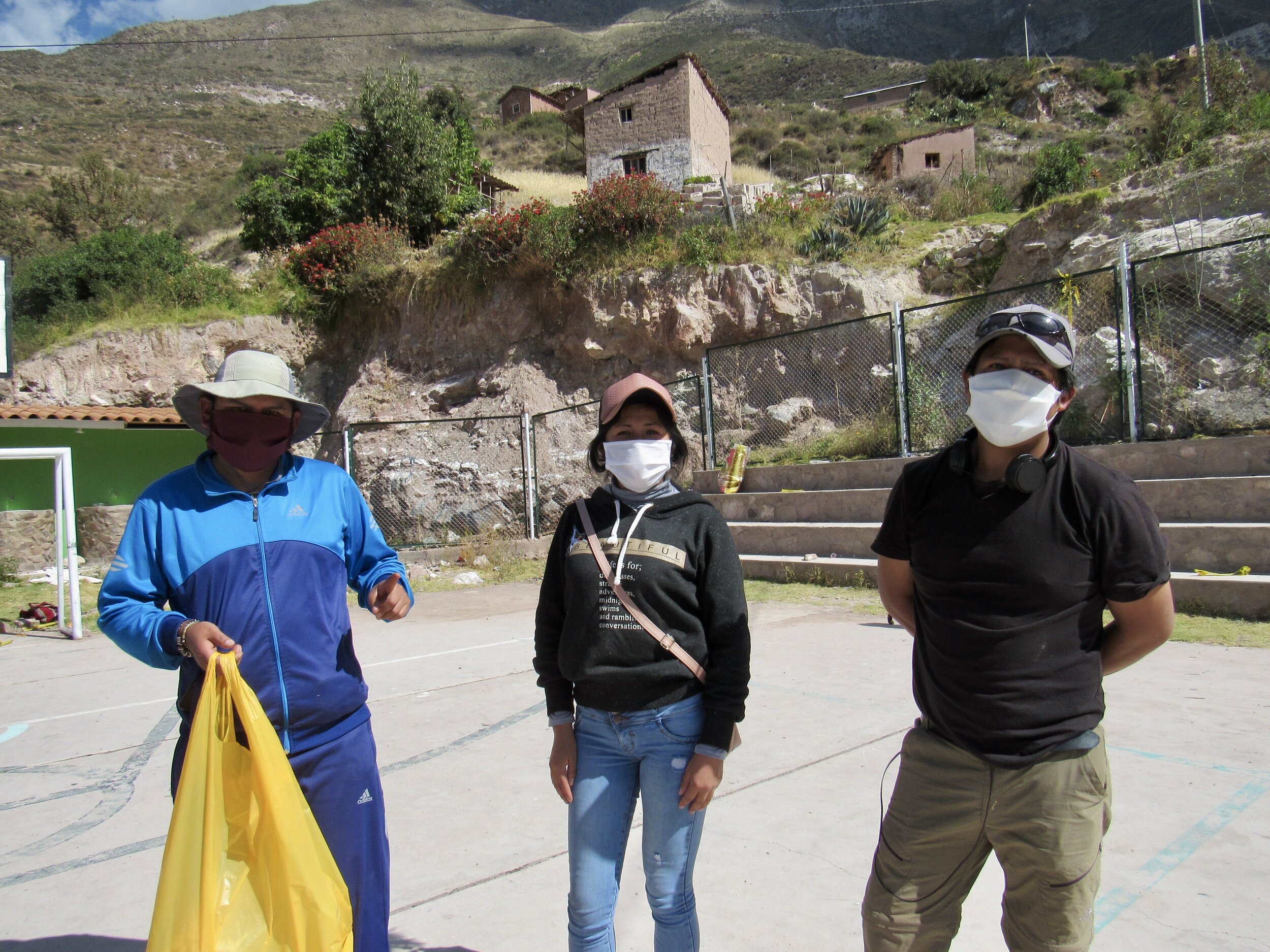Comunidad Campesina de T’astayoc-Perolniyoc
Our visits to the communities of T’astayoc and Perolniyoc were so humbling. The need is so great and we can only bring so much, but at least we’re bringing something.
We met the families of T’astayoc at a bend in the road, where three families live in their traditional stone houses with thatch roofs. We brought food for 35 families, 32 of whom hiked down to meet us. Some live as far as an hour higher up in the mountains, although most of the villagers live nearer the school, which is a half hour hike up from where we met.
Henry, Auqui and I were joined by Alfredo, who works for the mayor in Ollantaytambo. While a few community members helped us unload the truck, Alfredo gave out masks to anybody who didn’t have one. The villagers were seated in a big circle, not really as far apart as social distancing rules require, but none of them are a threat to each other. There are no cases of Covid near their community, so the only ones they really needed to keep a distance from were us.
Thanks to our generous donors, we had bought for each of the 35 families: 5 kilos of rice, 2 kilos of sugar, 2 tins of milk and 1 liter of vegetable oil. We had also used some donation money to buy bags of sweet popcorn for the children. Henry’s sister had donated animal crackers and some gently used children’s clothes.
Since the Peruvian government announced a mandatory quarantine on March 15th, these families have not had any work besides subsistence farming. Also, since there are cases of Covid in some of the larger towns in the area, like Cusco, few people from the mountains feel comfortable going down into town. Even if they had money to go shopping, it’s too dangerous to go buy clothes. These children likely haven’t had any new clothes since Christmas, although in six months any child will have outgrown their clothes. When markets open up in Cusco, we plan to buy more used children’s clothes to take with us on each event.
After we distributed the food and clothes, we sat down in the circle with everybody else to share the boiled new crop potatoes that they had brought for us. They passed me a big basket of potatoes and joked that they wanted to see me eat all of them. I took several, then passed the basket on. They were each about golf ball sized, but all different colors. There were deep purple ones, red ones with white middles, bright yellow ones and others with a purple outside but bright pink inside. Like most freshly harvested vegetables, they were delicious! One family had also brought a bright yellow spicy pepper sauce to pour on them, which was equally delicious.
We were sitting near a beautiful sparkling stream, which one community leader informed us was the only water source for the villagers. They have been asking the government to dig a well for years, but still have not had any success. We promised to advocate for them in all of our future dealings with the mayor’s office. We would have loved to stay longer, but had to go back to Ollantaytambo to load the pickup again for the drive up to the village of Perolniyoc.
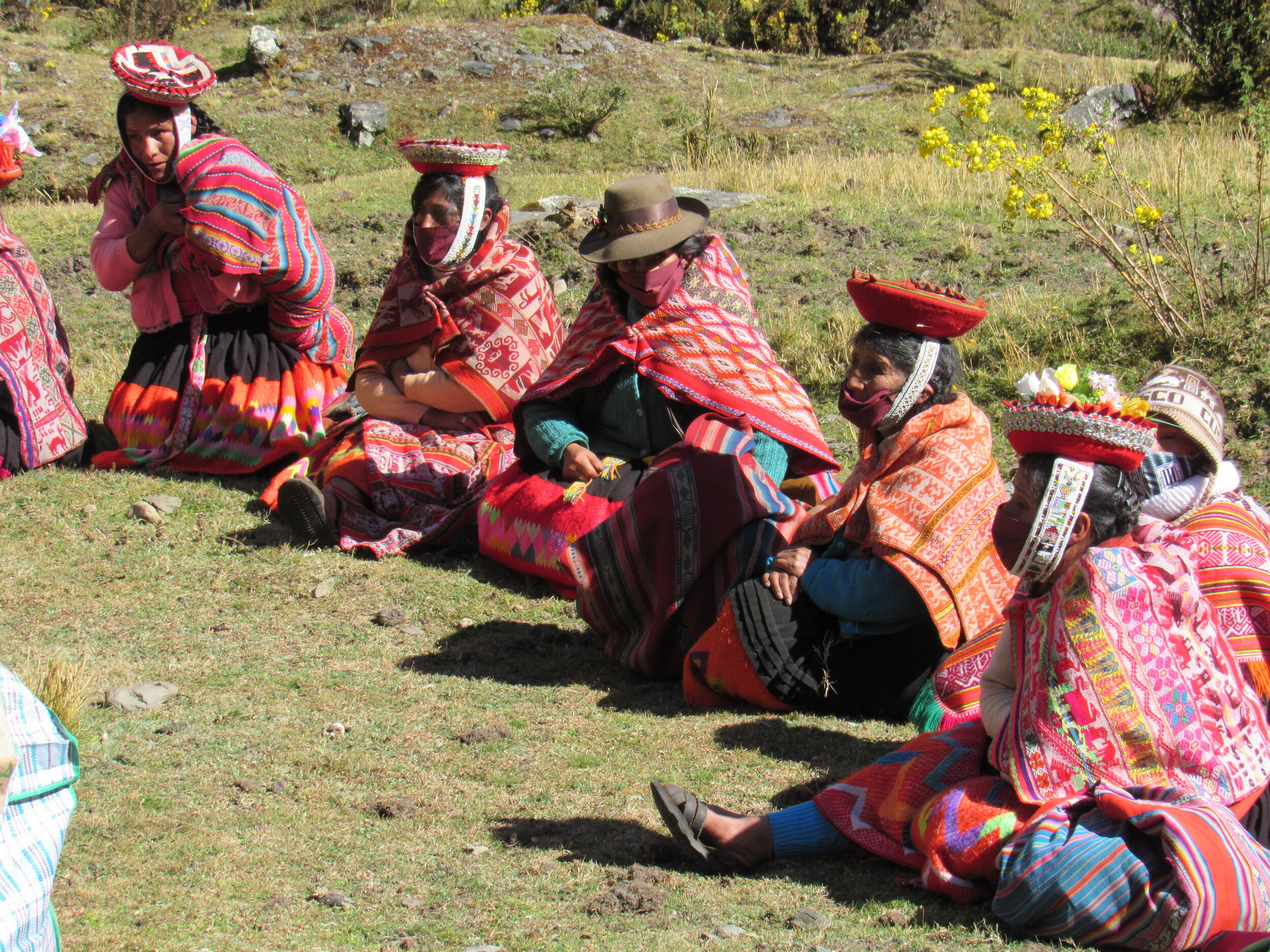
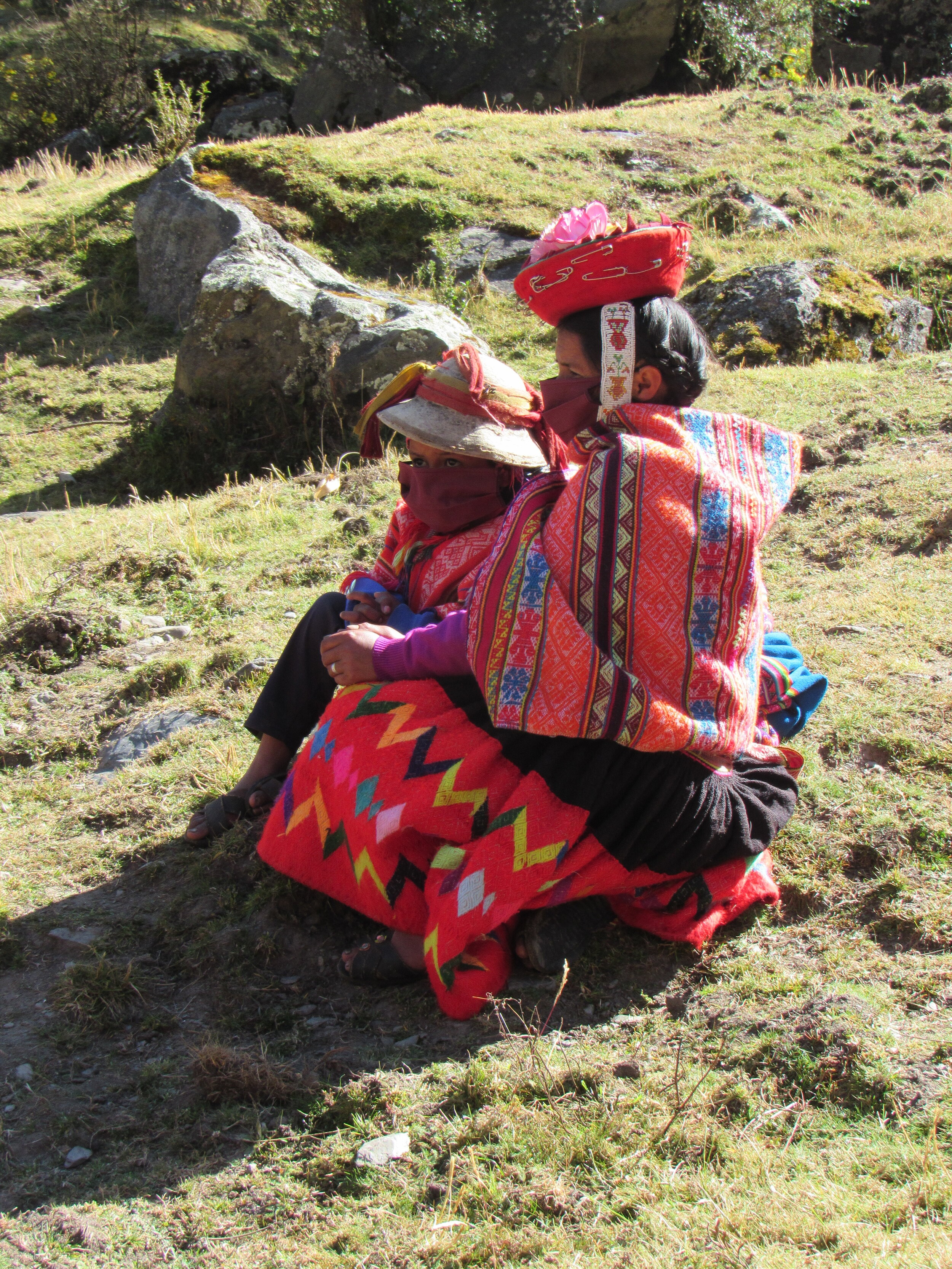
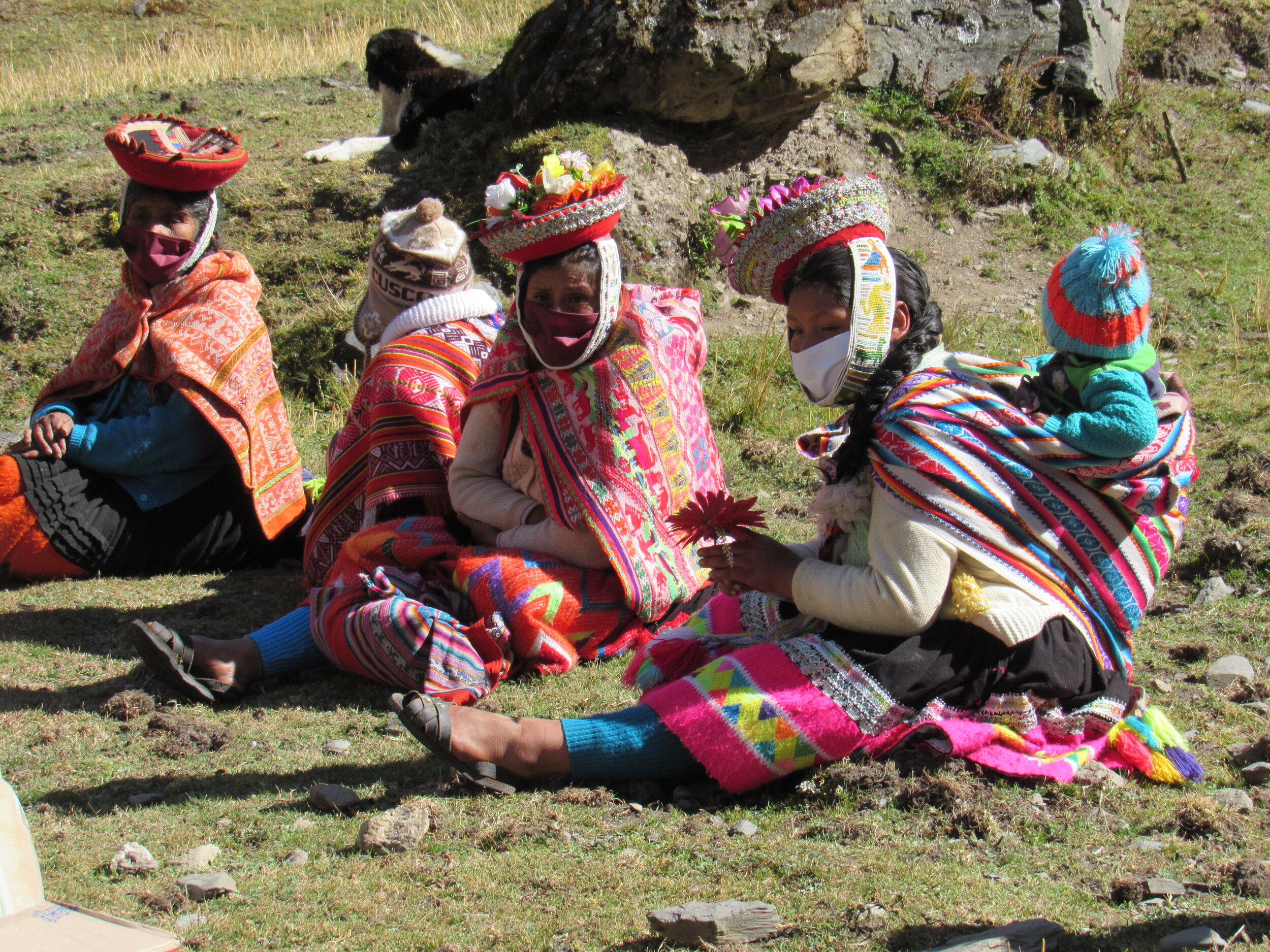
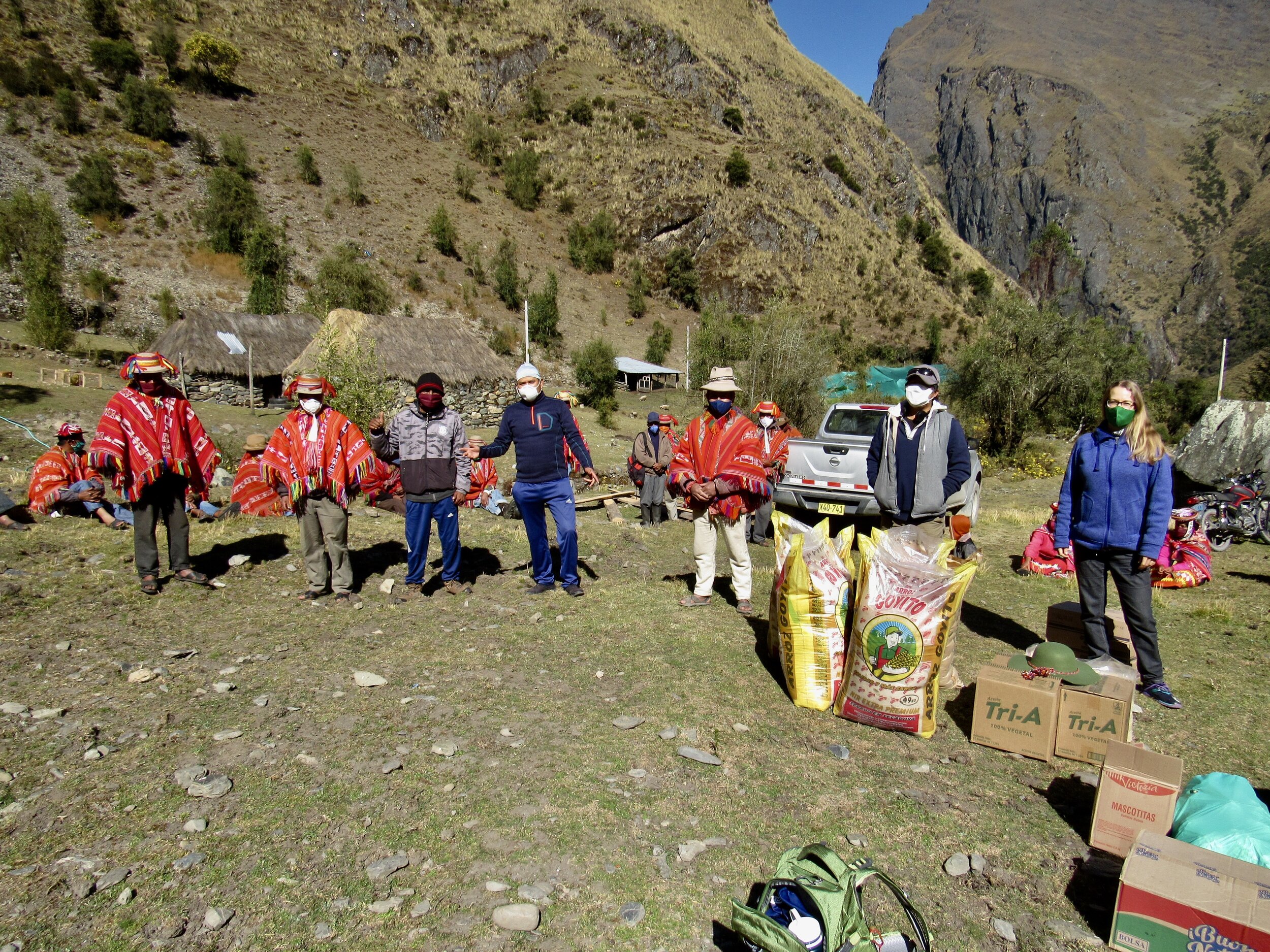
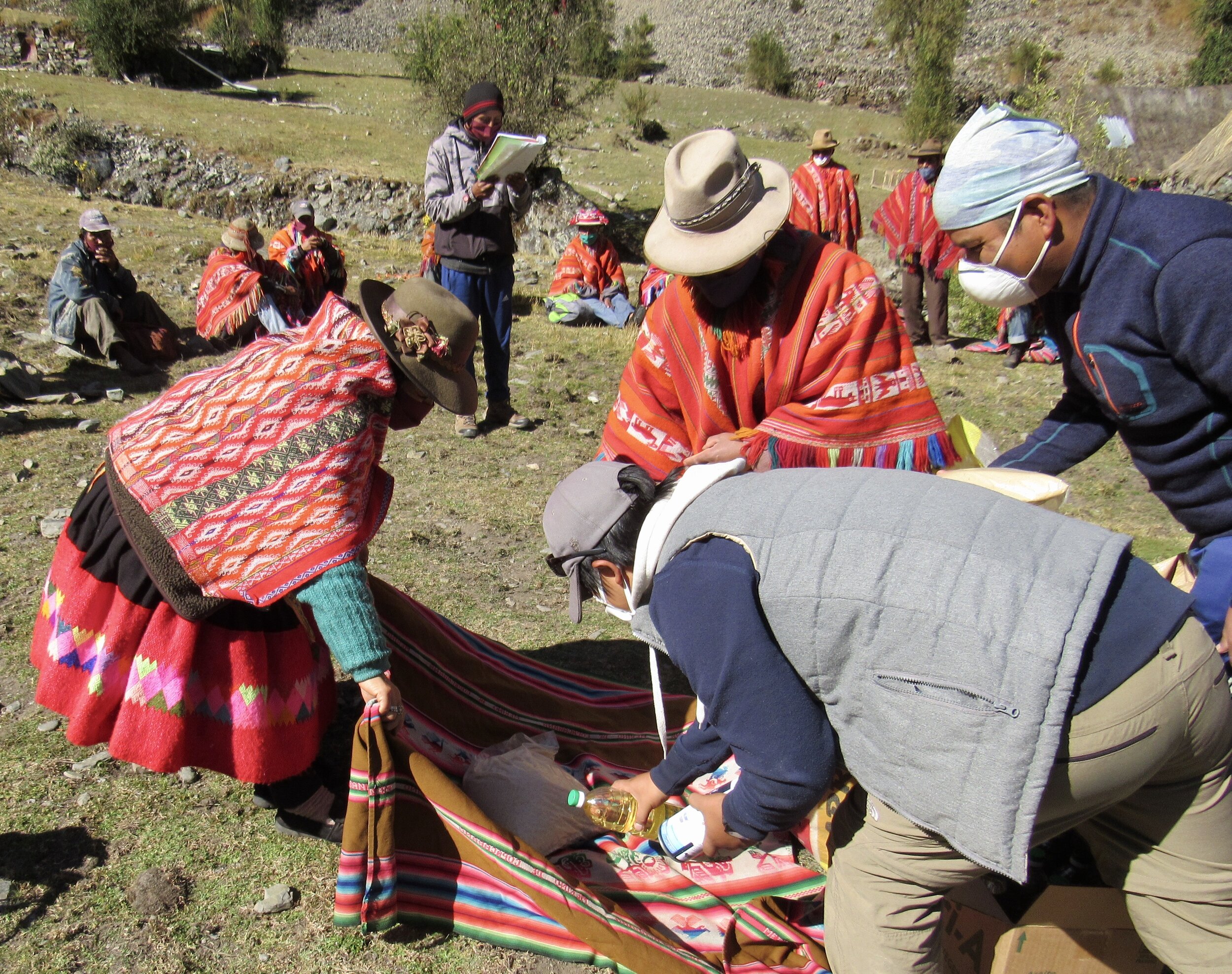
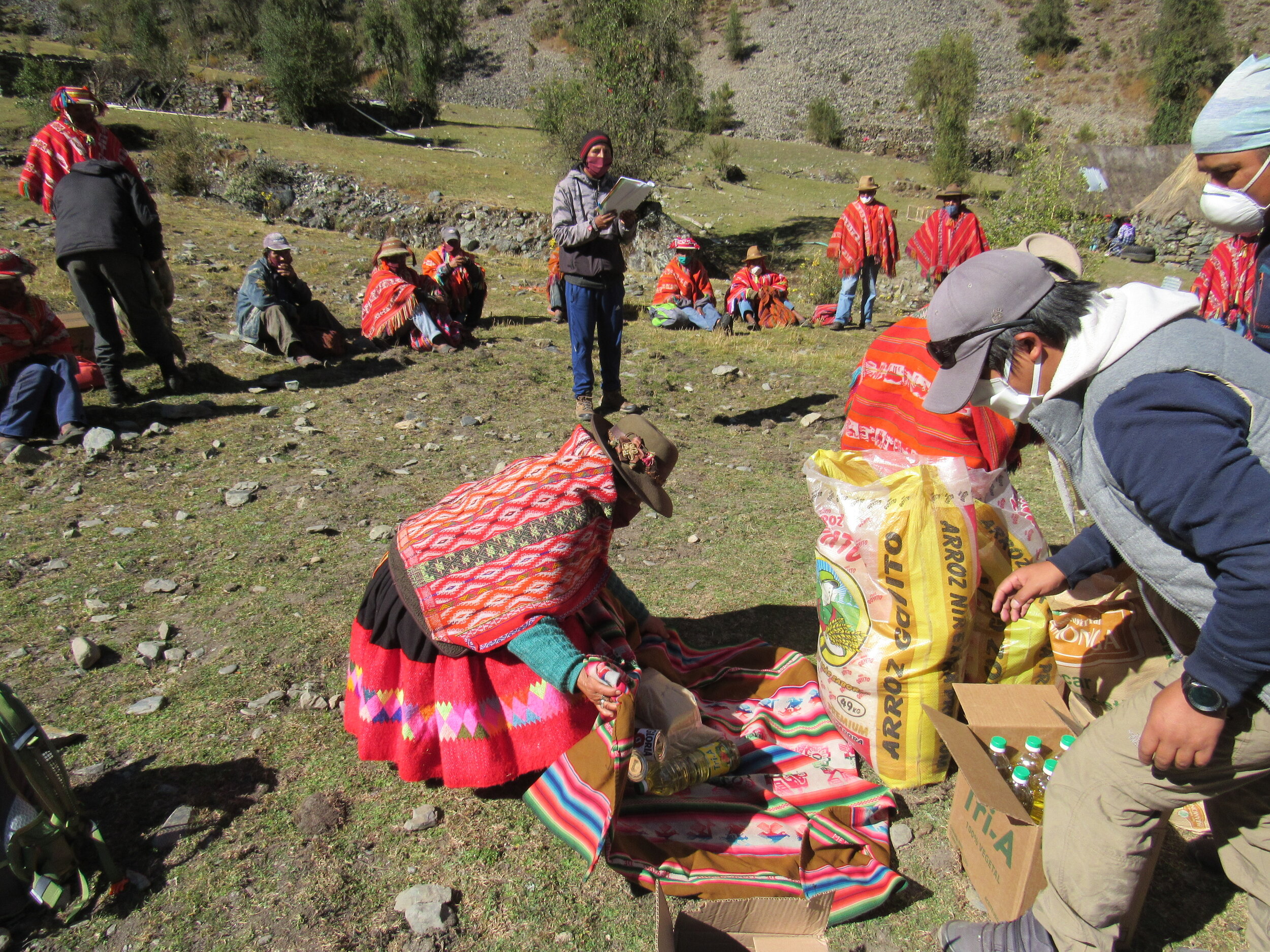
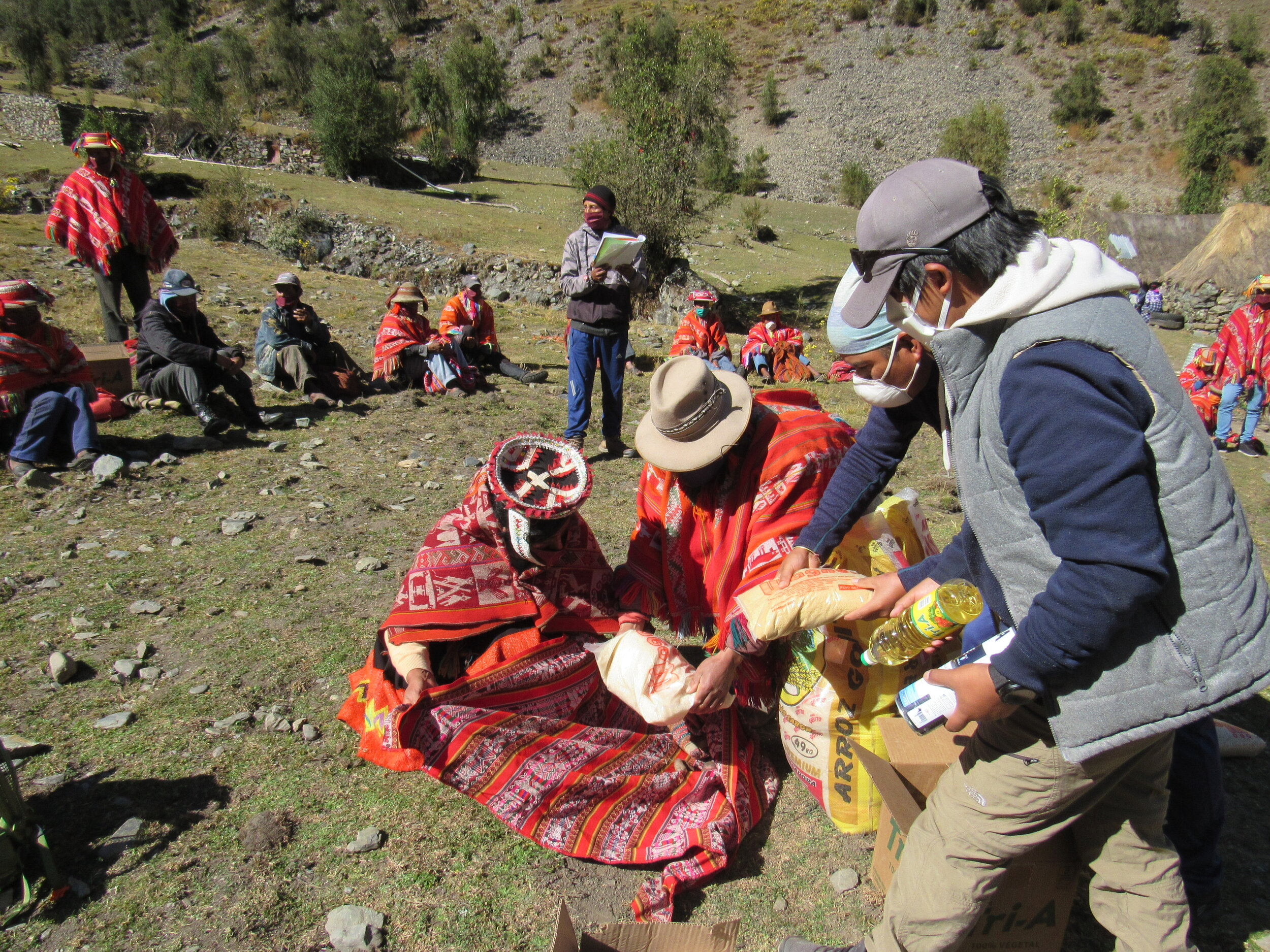
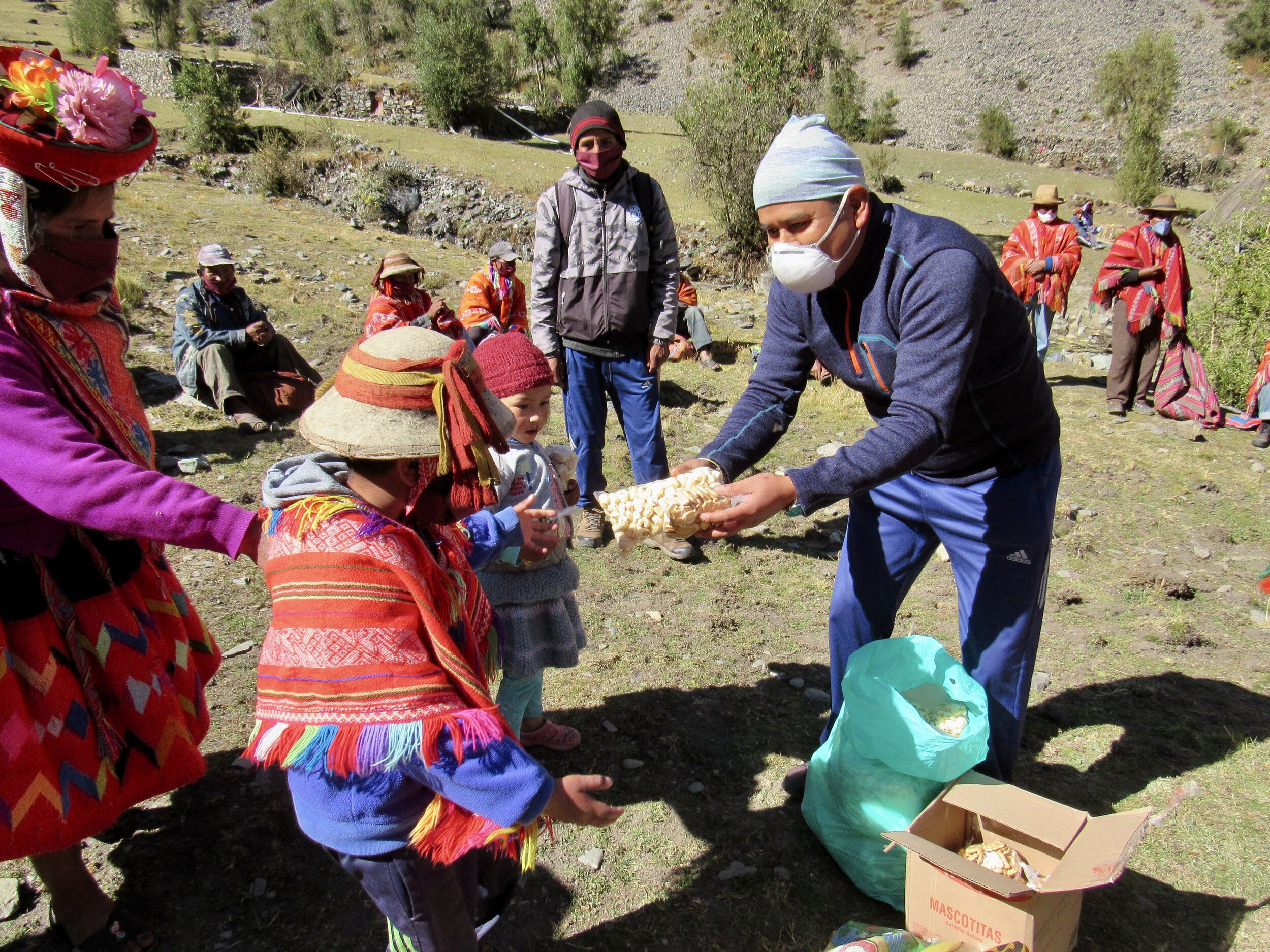
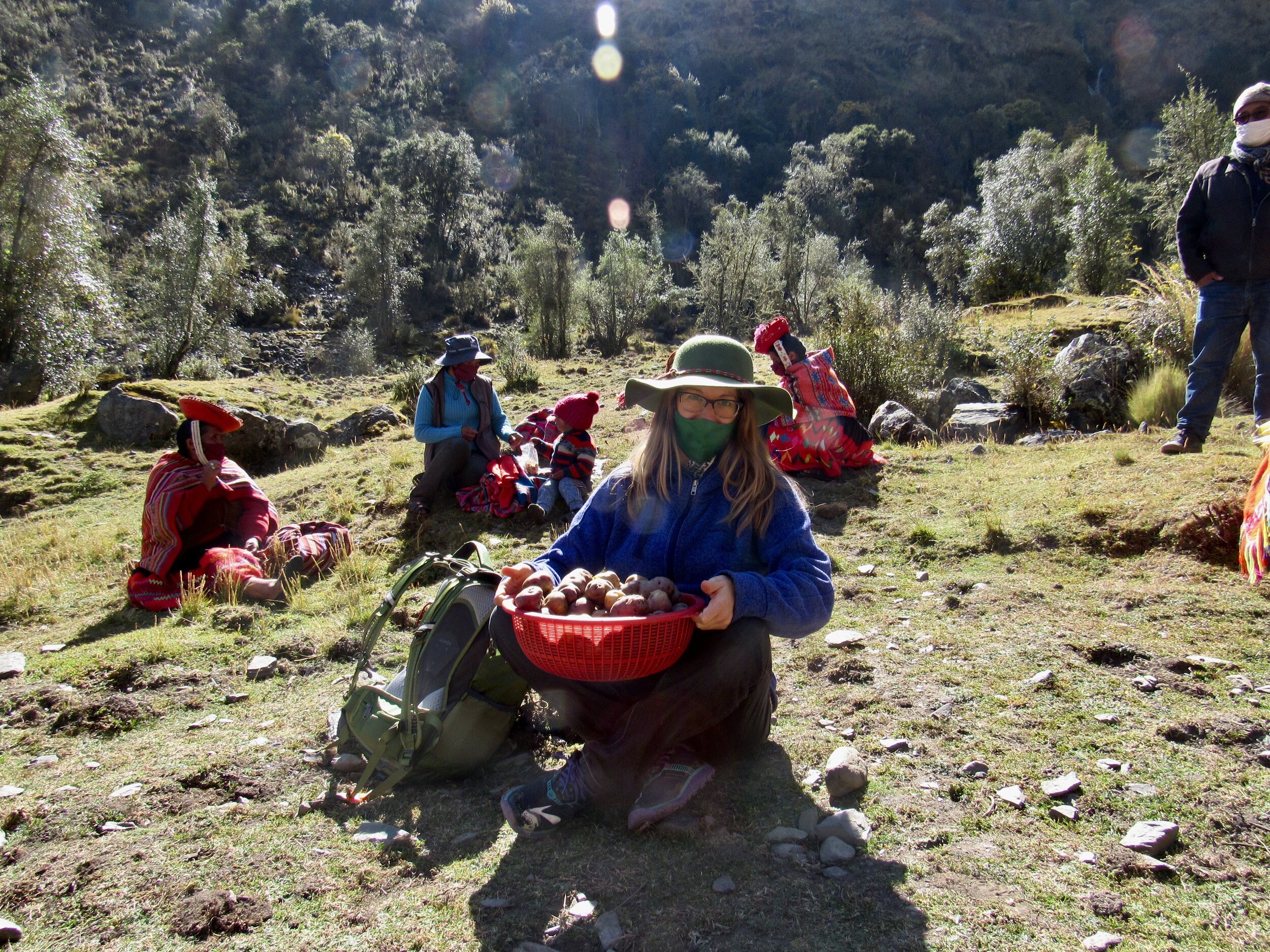
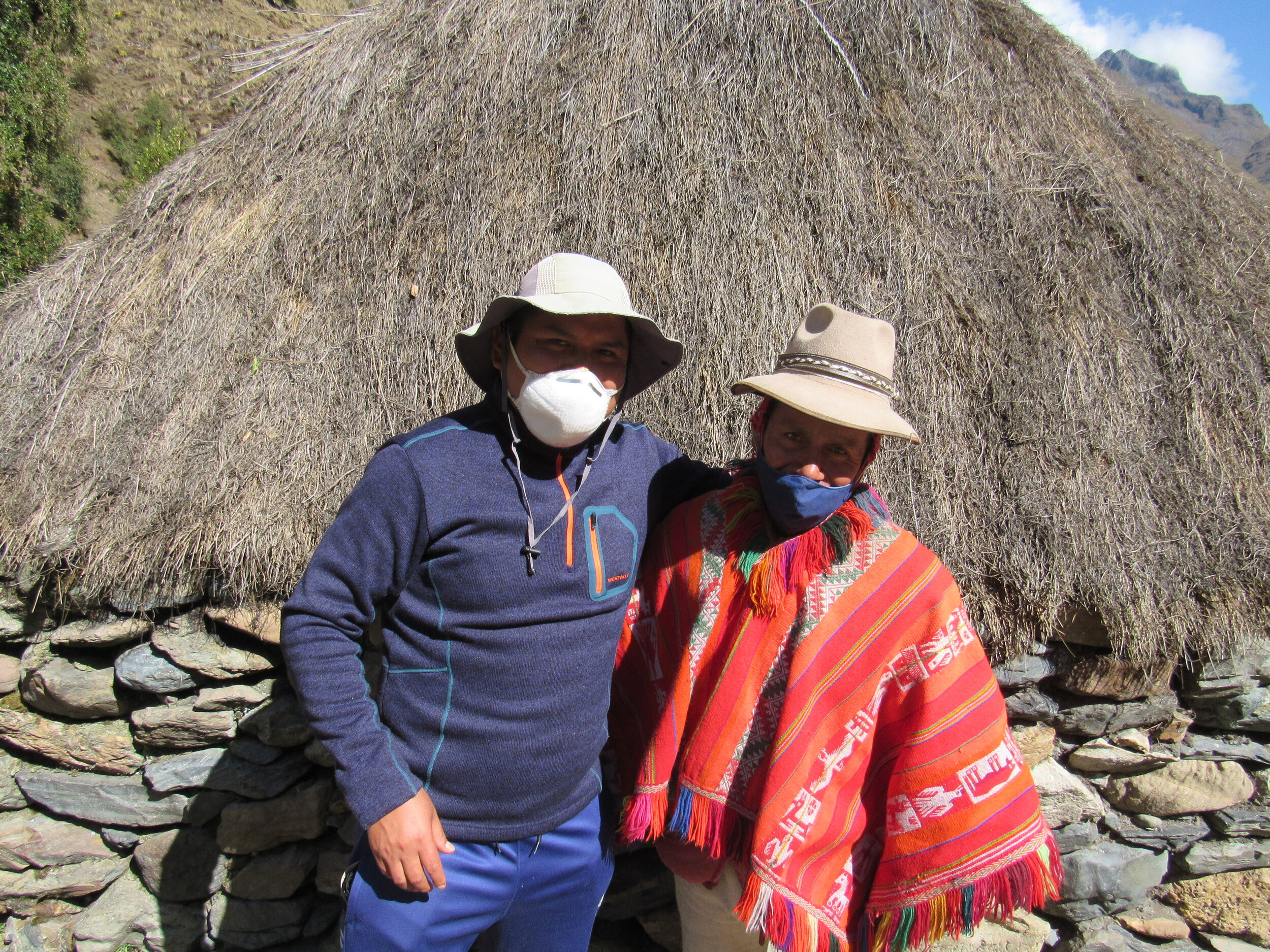
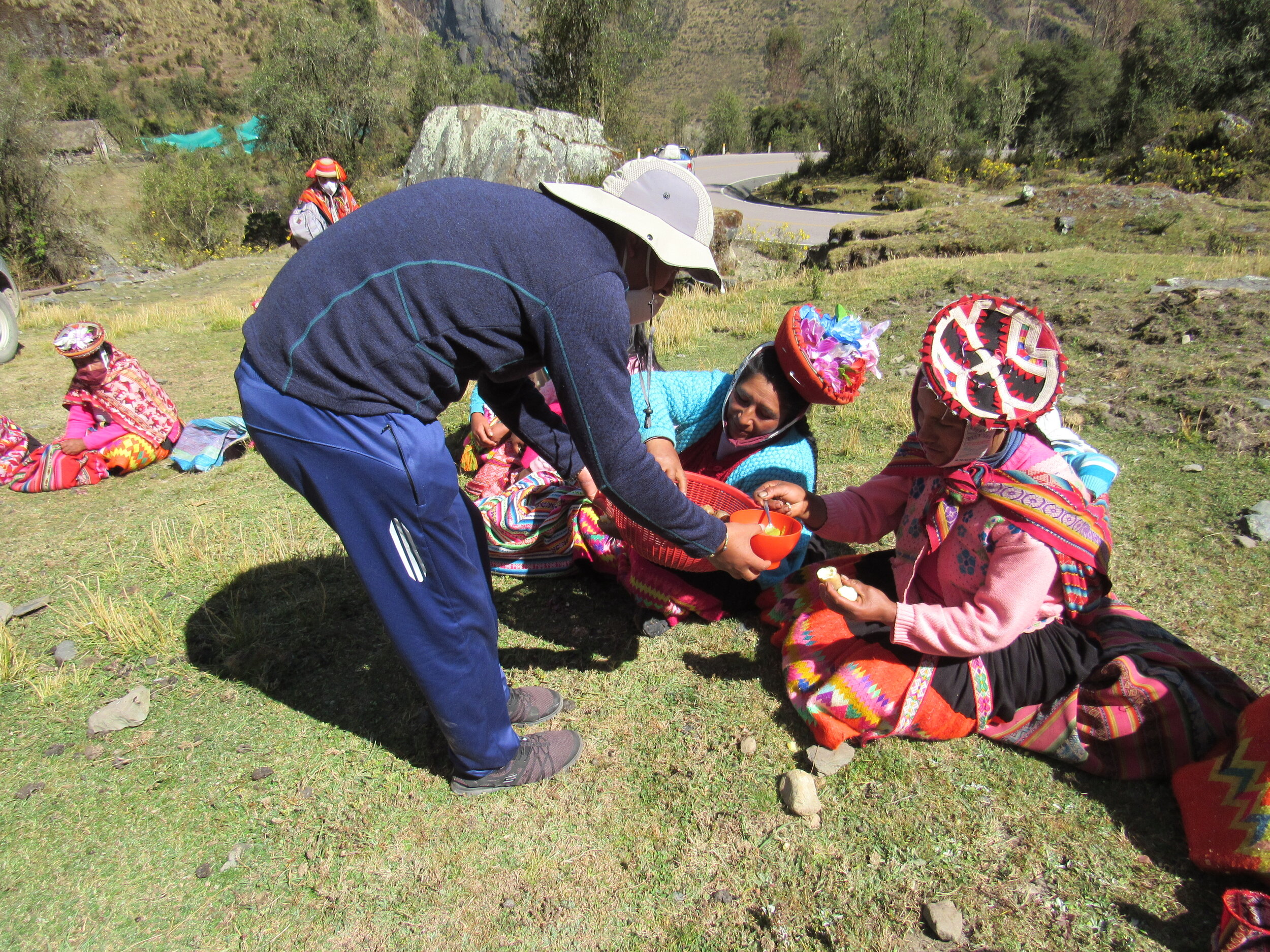
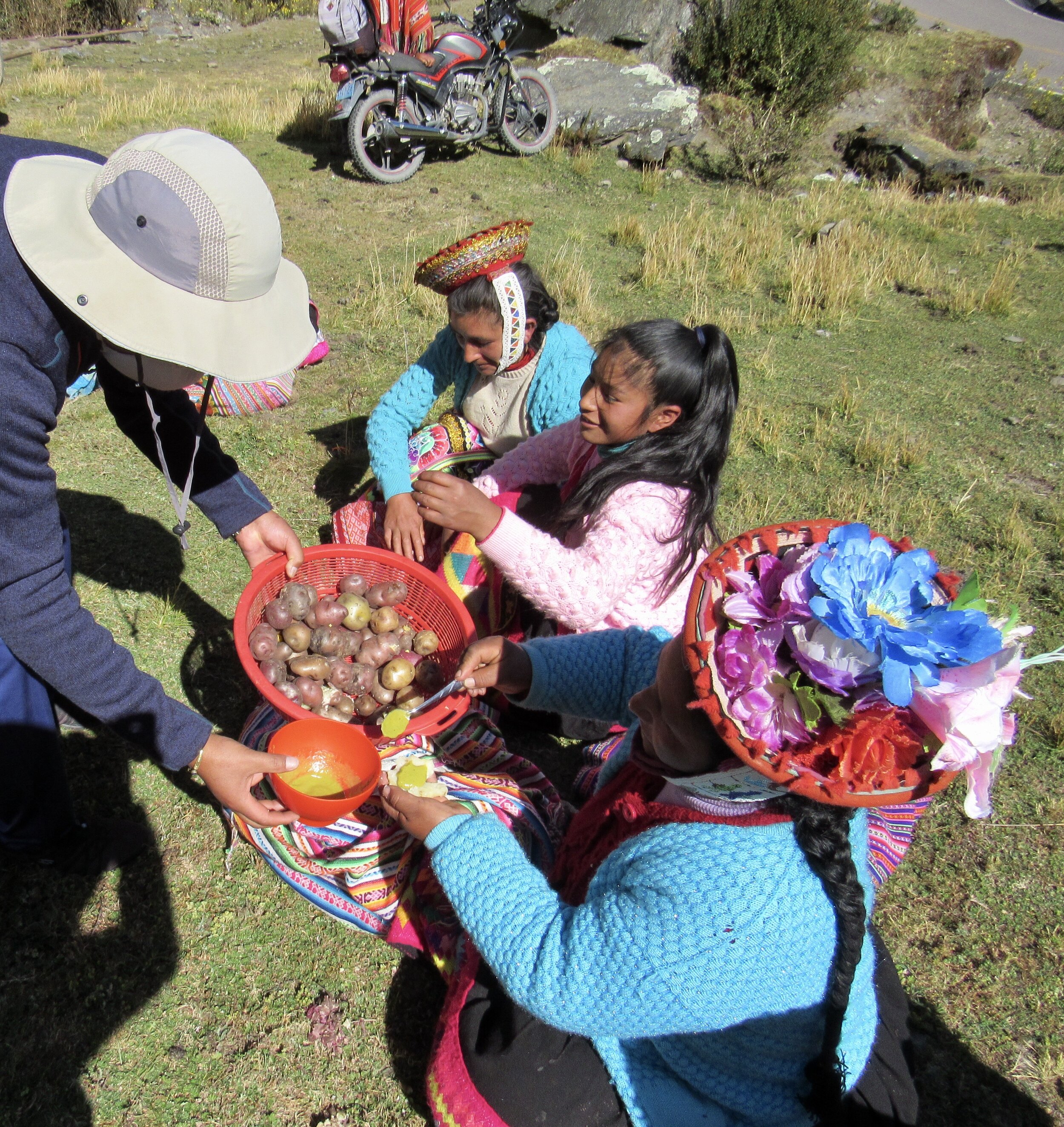
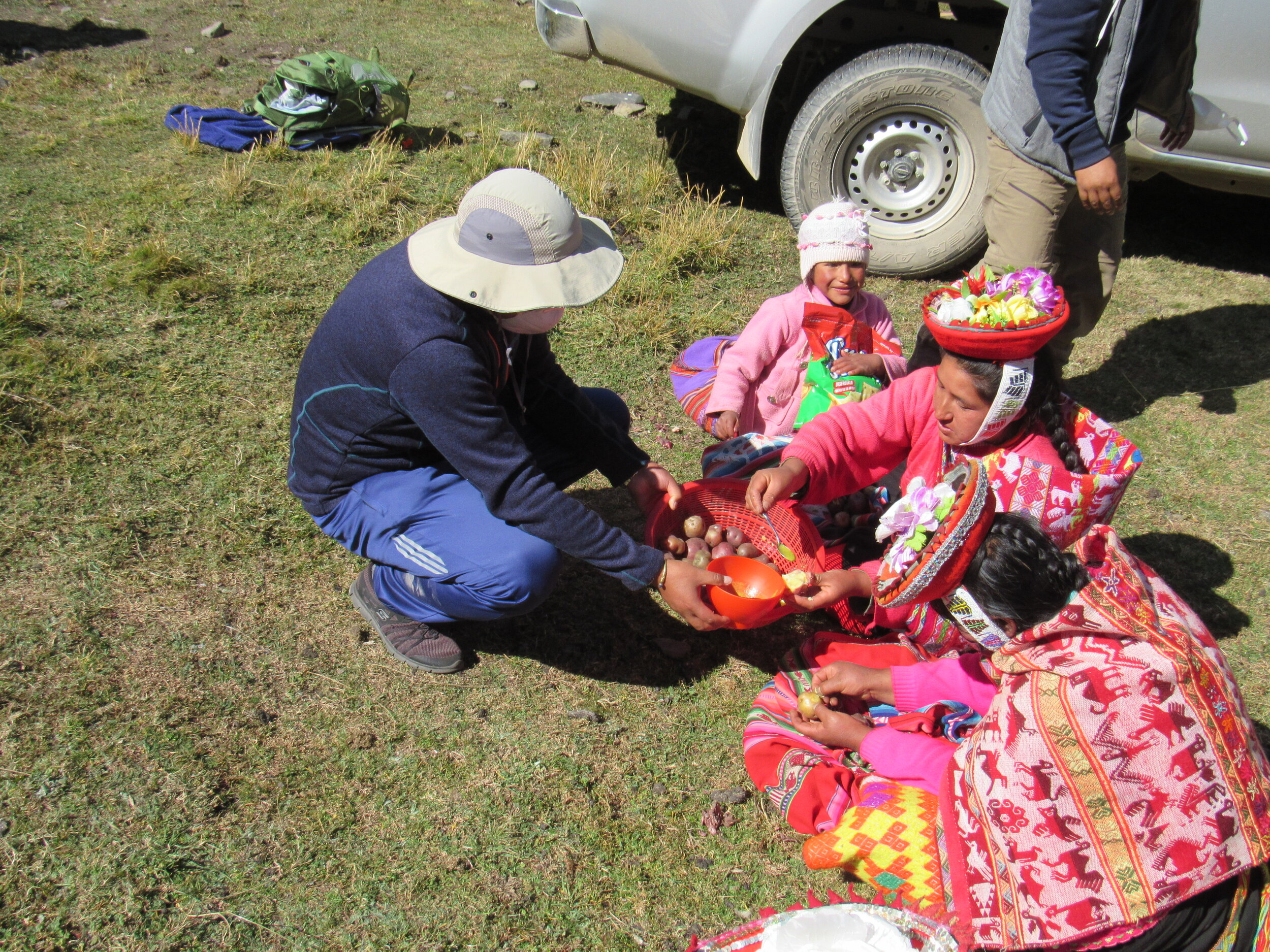
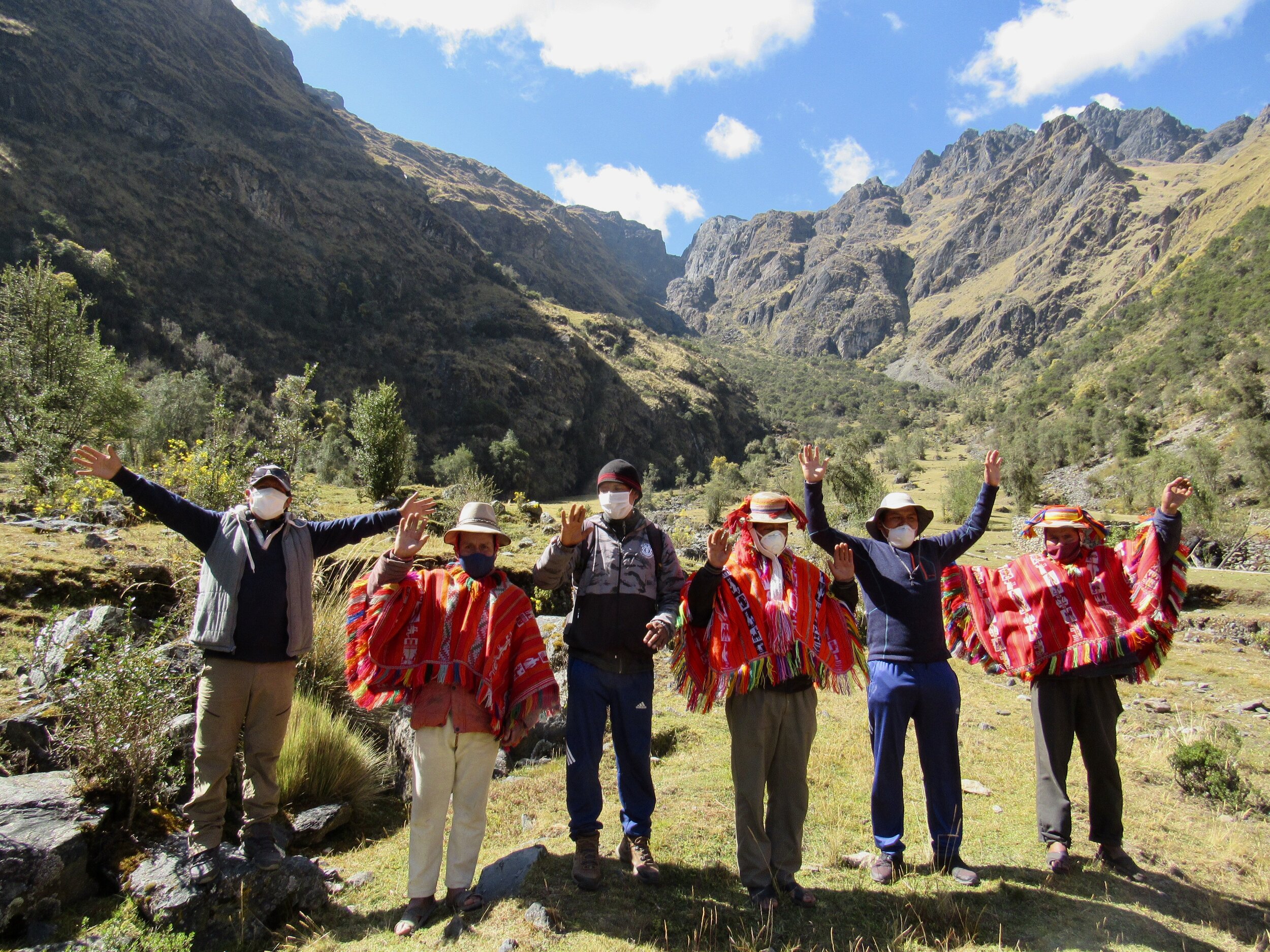
On to Perolniyoc!
When we arrived at Perolniyoc, we saw that the families had gathered at a basketball court. It was jarring to see an expanse of cement, surrounded by a chain link fence, after the bucolic charm of T’astayoc. Still, it was the most convenient gathering place where we could get the pickups. Each family sent a representative, who hiked down a half hour or more from where they lived in the mountains. Like the families of T’astayoc, the people of Perolniyoc have been reduced to subsistence farming, without any contact with the outside world. There are no cases of Covid in the area and they have made their own checkpoint at a river crossing, near the main road.
Thankfully, the woman working the checkpoint was expecting us and unlocked the gate at the bridge. The people of Perolniyoc have made a strong metal gate to protect themselves from any unauthorized visitors. We gave the woman at the checkpoint one of the extra 5kg bags of rice and thanked her for letting us pass. She welcomed us, although we are coming from Cusco, where the numbers of Covid cases are starting to spike as the government is now easing some of the restriction of quarantine.
Community president Delfina helped us organize the distribution, with one woman helping Henry and Auqui handing out the food while another called names from the list. After we distributed the rice, sugar, milk and oil, we called all of the kids to come over. We handed out the last of the popcorn, animal crackers and donated clothes. As solemn as many of the adults had been, the children ran around laughing and playing. They tried on each other’s new clothes and traded animal crackers.
Delfina invited us to a house nearby where a woman makes chicha and sells food from her home. We were treated to big glasses of refreshing chicha, which is brewed from corn. It is one of the most obvious links between the modern Quechua and the ancient Inca civilization. Recipes have been passed down through the generations and I have no doubt that what we were served is exactly like what the Inca used to drink.
We were also served plates heaping with rice and pasta cooked with vegetables, topped with a fried egg. It was simple but delicious and we were so grateful, since breakfast had been over seven hours earlier and we didn’t have time to eat more than a few potatoes before we had to leave the families of T’astayoc.
After lunch, we drove back down to the checkpoint, which was unlocked for us again. Back at the main road, one empty pickup turned left to go back to Ollantaytambo and our driver turned right, to take us back to Cusco.
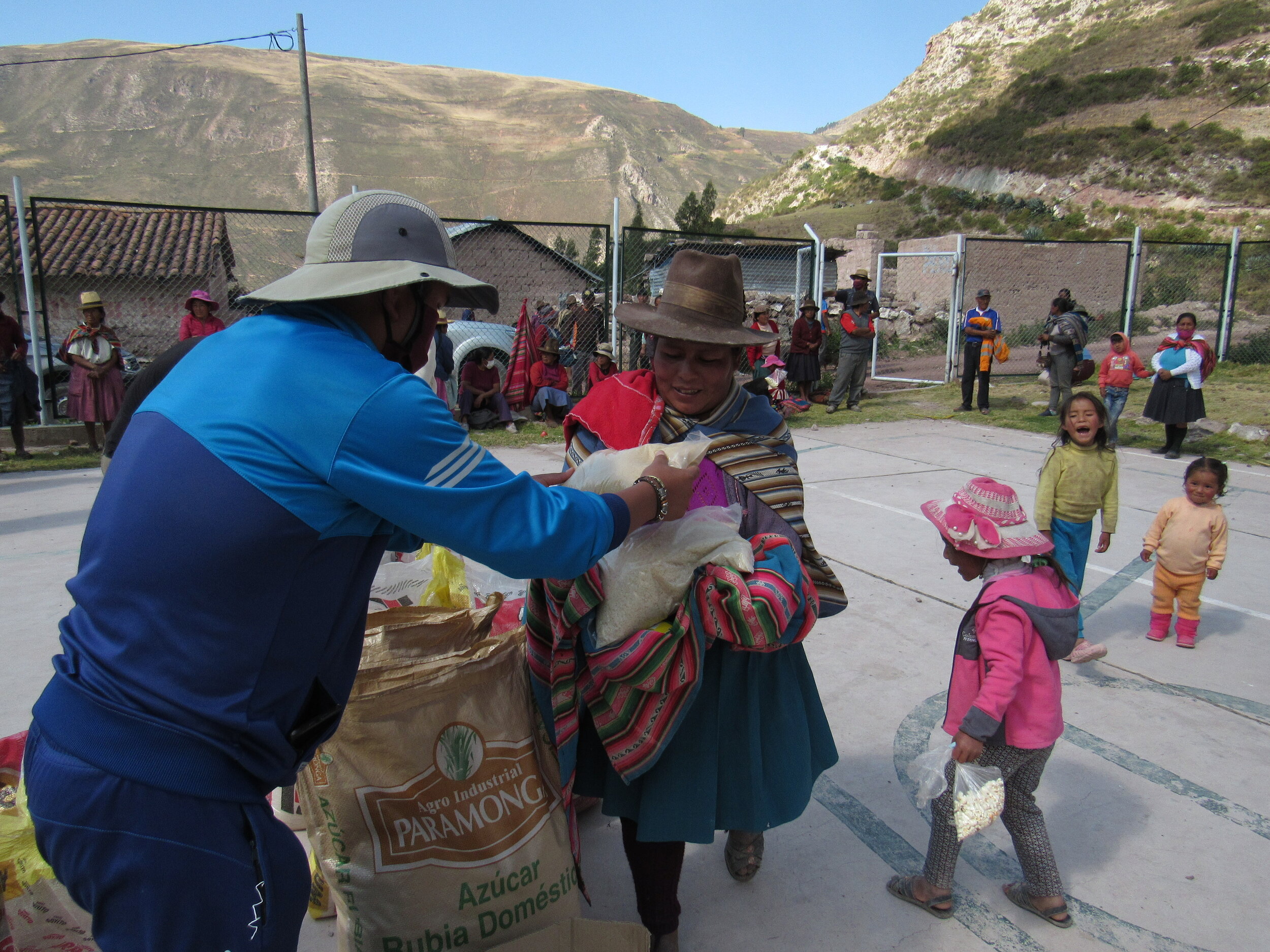
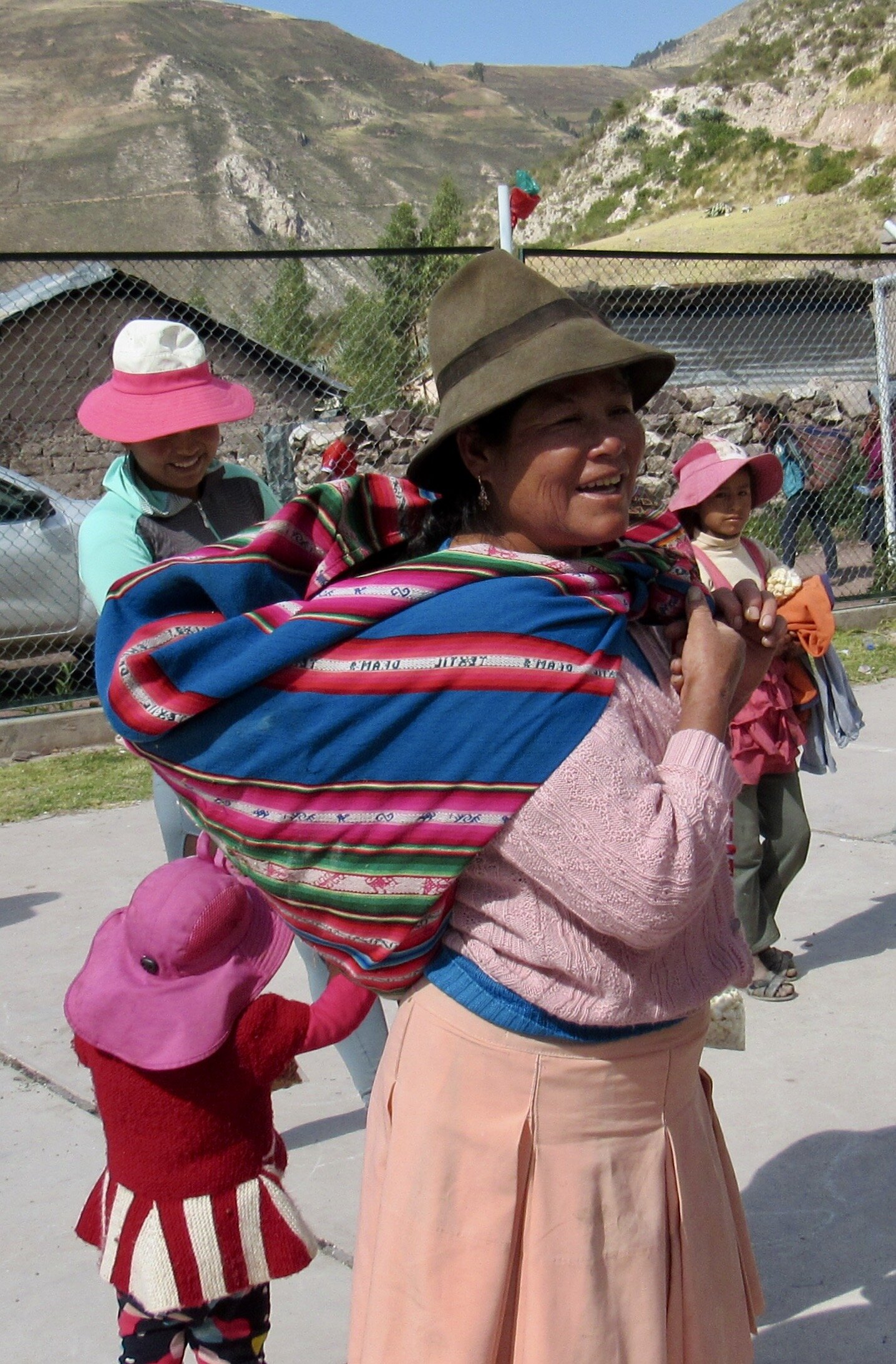
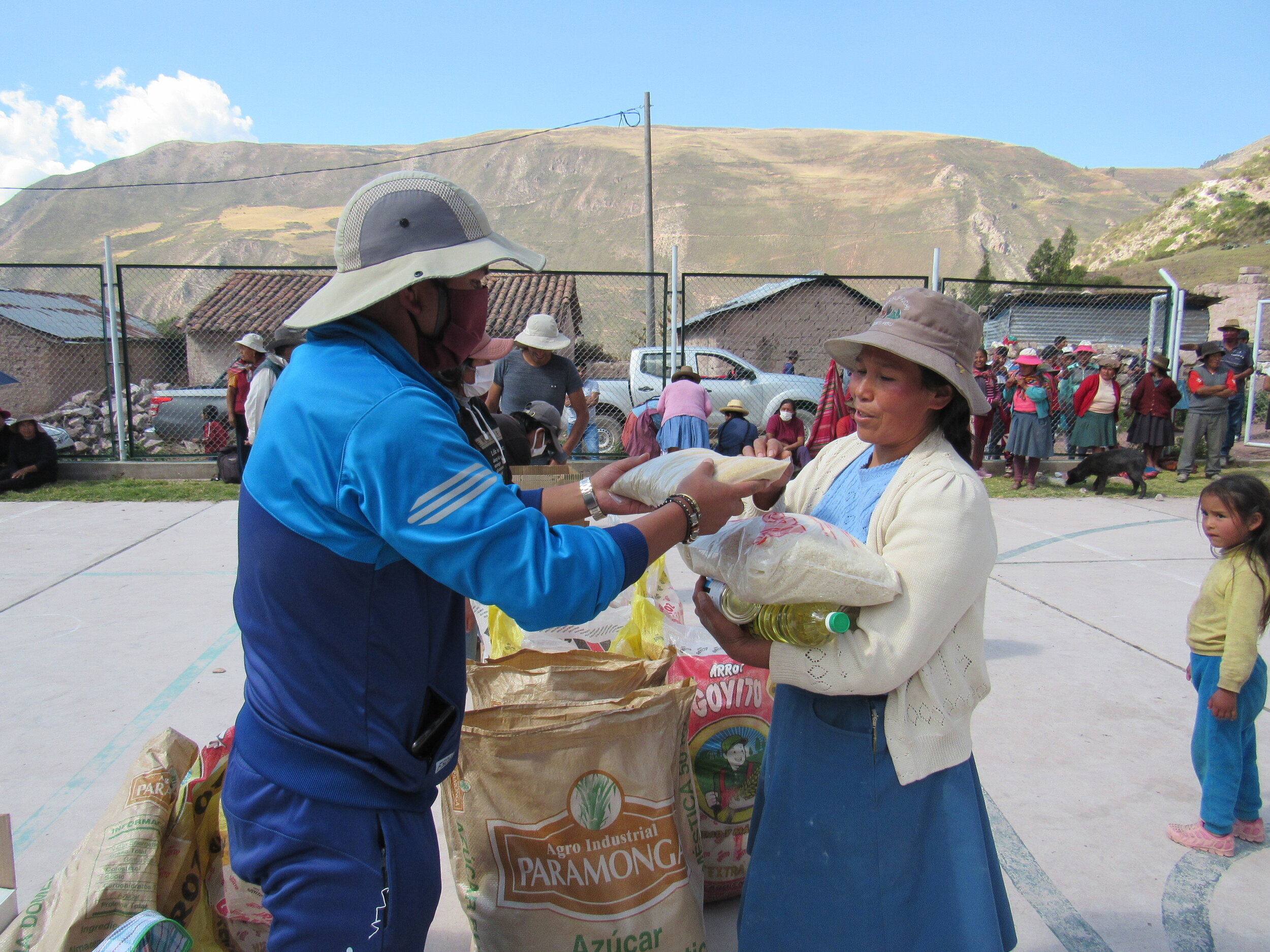
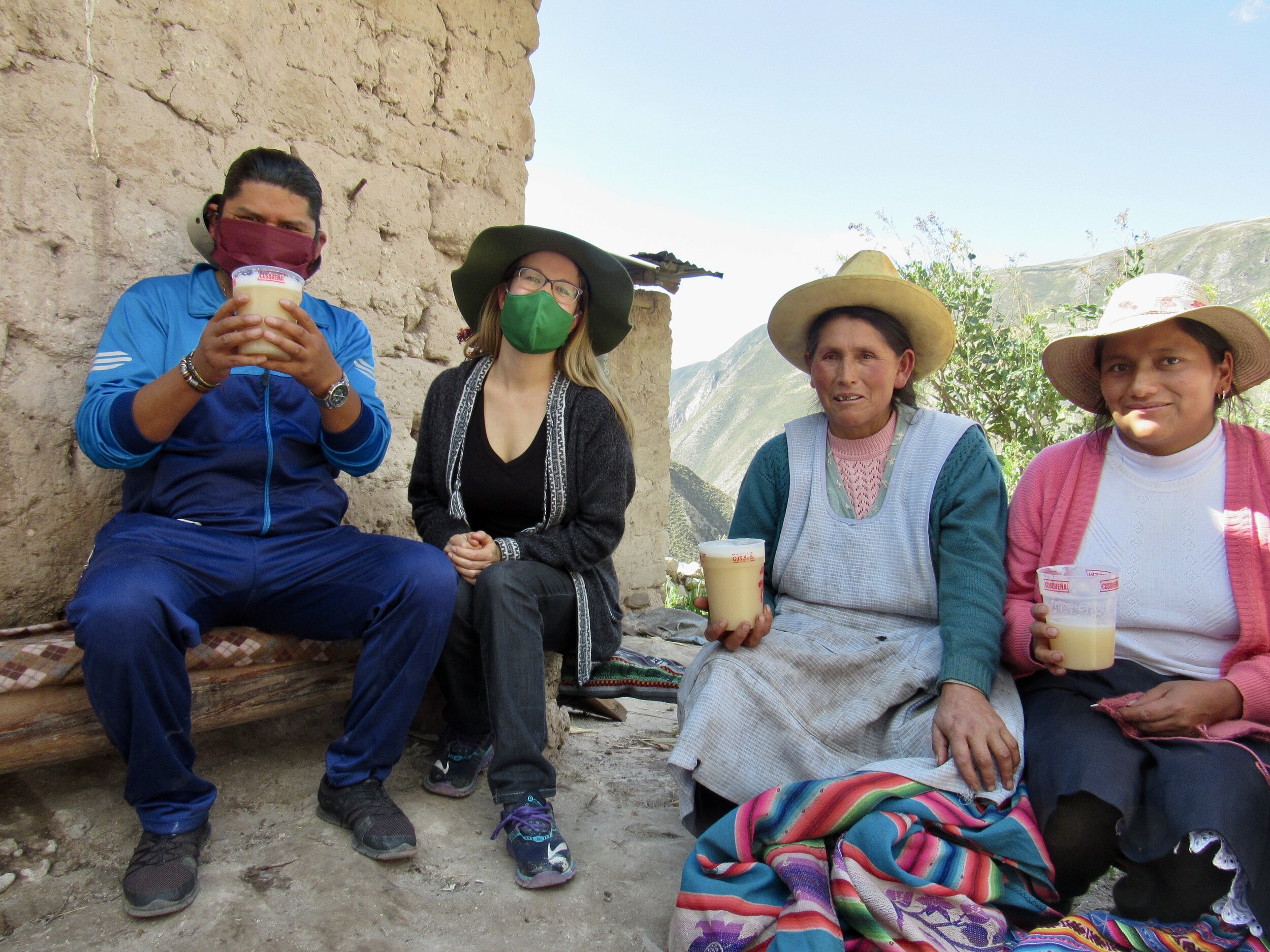
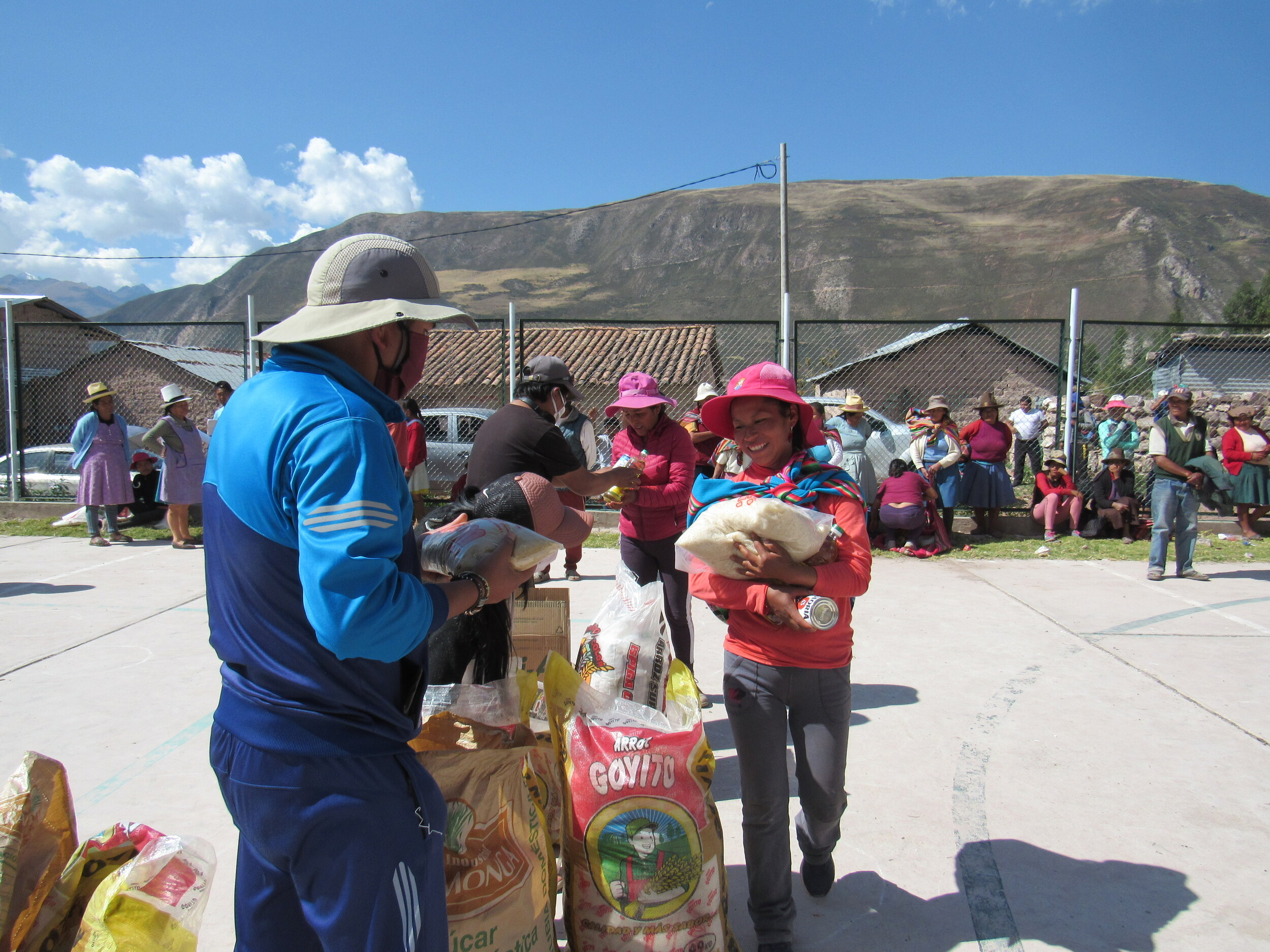
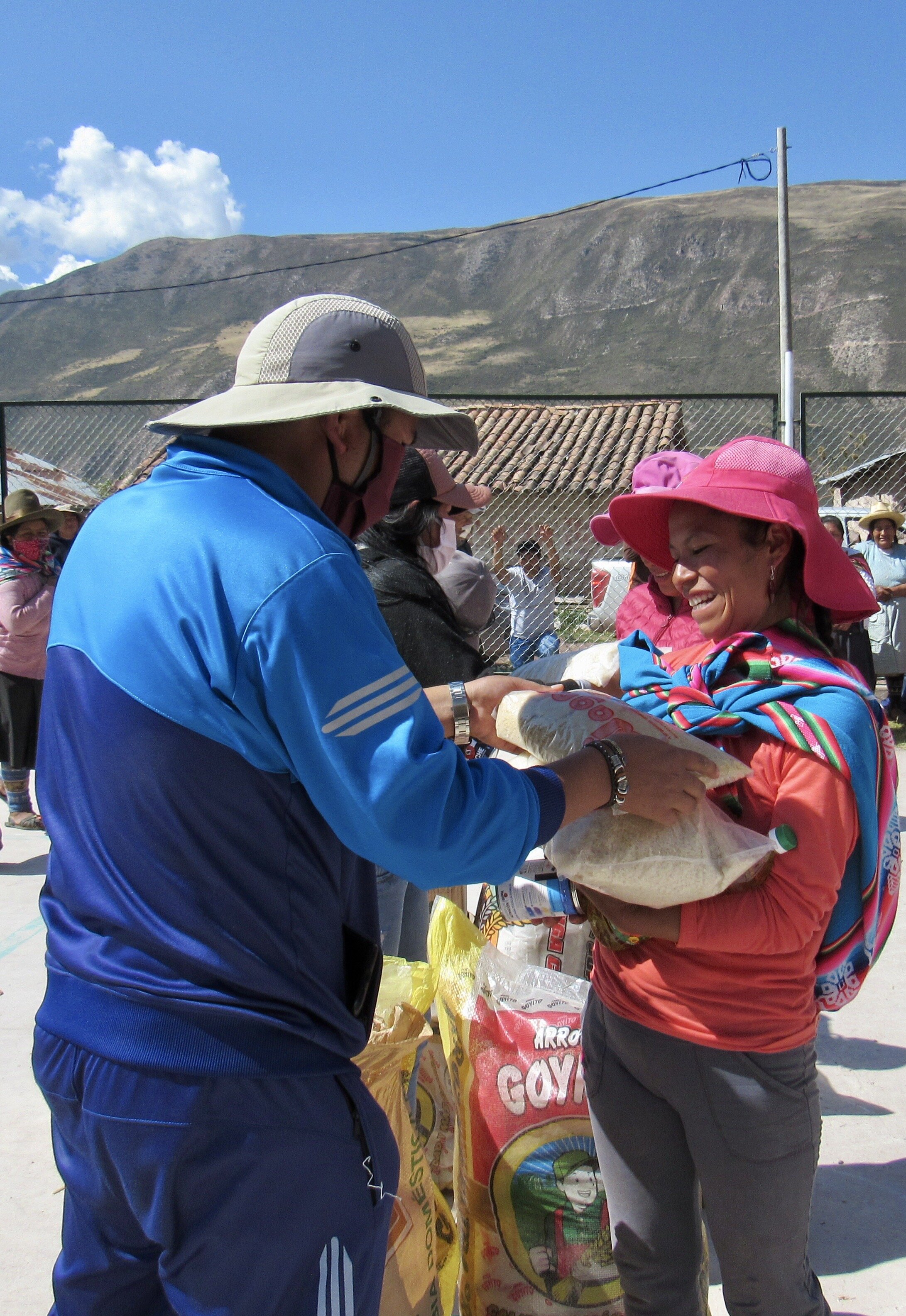
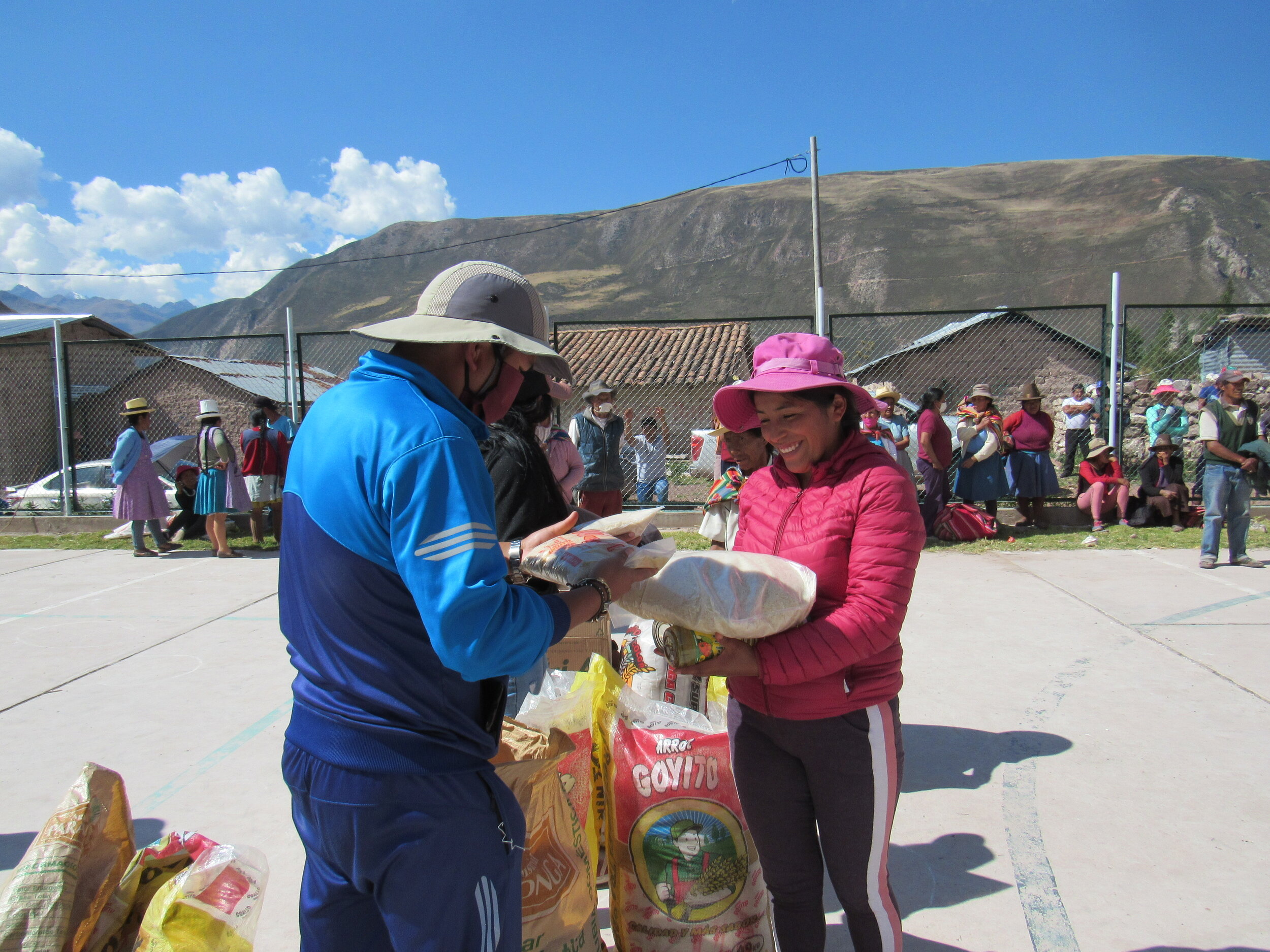
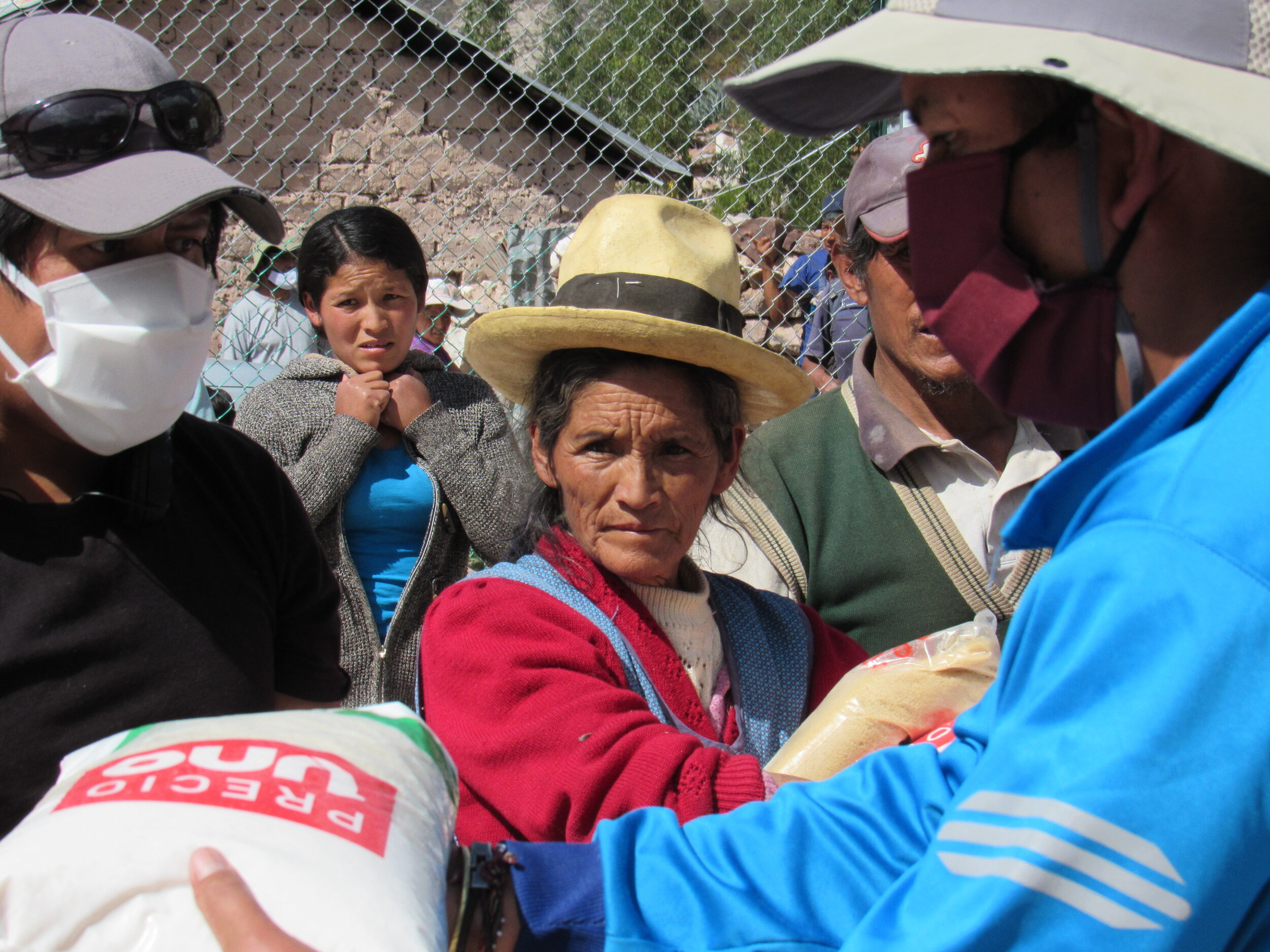
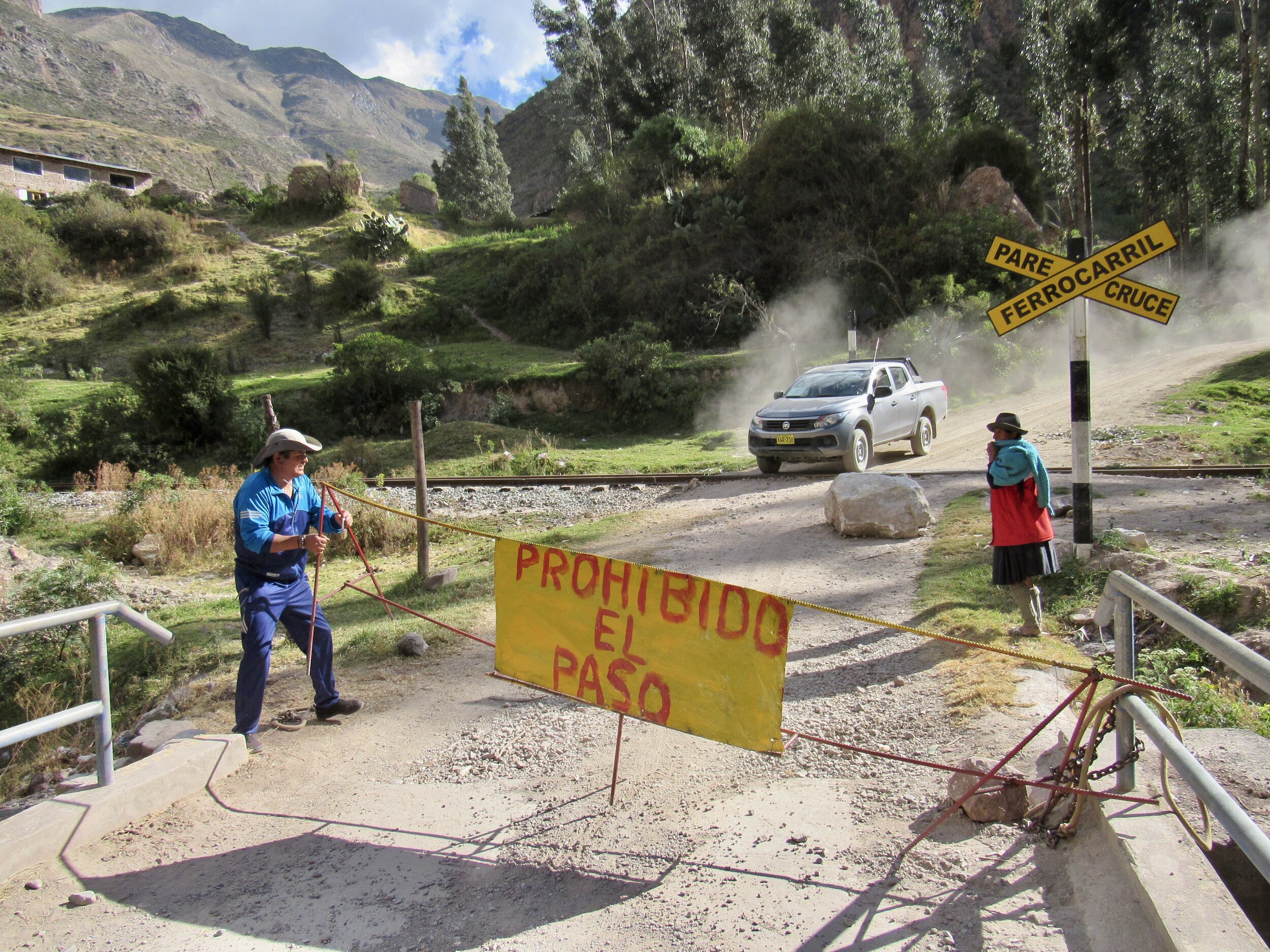
The logistics and backstory
We did our shopping again with Jorge Wagner, who runs the wholesale store Wagner’s Licoreria. Like last time, he was very generous when I was negotiating for prices of 5kg bags of rice, 2kg bags of sugar and vegetable oil. When we had first spoken about getting supplies for June 27th, he was unsure about being able to get oatmeal. I even asked at a few other wholesalers to see if they had any oatmeal in stock. Every single one of them said that they couldn't get it because it’s an imported product and they were all out of imported products.
Last time I had bought the 3 Ositos brand (3 Little Bears), which is the most popular brand. This time, nobody had any oatmeal of any brand. It really is considered a treat here and we are so fortunate that we were able to buy 5 kilos each for the families of Sut’uc-Pacchaq. We didn’t have enough donations to buy the large tin of powdered milk that we got for the June 6th event, but after some negotiations, we settled on two cans of condensed milk per family. With a few last minute donations, we were able to pay for two cans of milk for a hundred families.
We are dependent on the mayors of each town to provide transportation, and this time turned out to be much more complicated than the first two times. The mayor of Ollantaytambo sent a truck to pick up the food Friday afternoon, rather than Saturday morning. Henry, Auqui and I were offered places to stay in Ollantaytambo Friday night, plus dinner and breakfast the next morning.
When we got to Ollantaytambo, we unloaded all of the cargo into Town Hall, then the mayor took us out for dinner. There is a little restaurant hidden back behind several shops, just across the street from Town Hall. Technically, restaurants in Peru are only allowed to operate for take out and delivery. However, Town Hall employees and the local police have an arrangement with this restaurant, which is still not open to the public.
After dinner we were taken to a hostel nearby. Walking through the main square, and along the streets leading from it, was a surreal experience. We’ve gotten used to Cusco’s empty streets, but had never before seen Ollantaytambo during quarantine. It felt as eerie as the first time I ventured out into the empty Cusco streets back in March.
Like Cusco, Ollantaytambo is a very touristy town. It’s the gateway between the Sacred Valley and Machu Picchu, so it obviously gets a lot of traffic. The mayor said it’s been unnaturally quiet the past three and a half months and they can’t wait until tourism revives.
The next morning, we packed food and children’s clothes for the 35 families of T’astayoc in one pickup and drove up to meet them. It was about an hour and a half drive from Ollantaytambo. After the distribution, when we went back to Ollantaytambo for the rest of the food. We filled the backs of two pickups for the drive up a parallel valley to Perolniyoc. These two communities were chosen by the mayor of Ollantaytambo as being the two in the greatest need.

